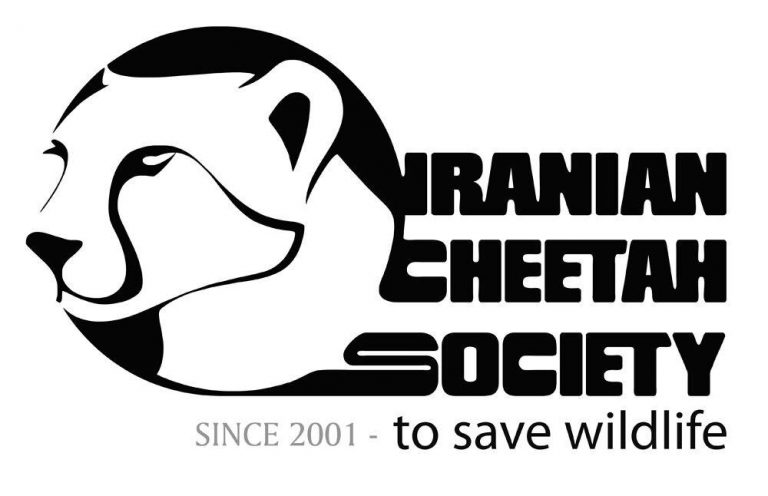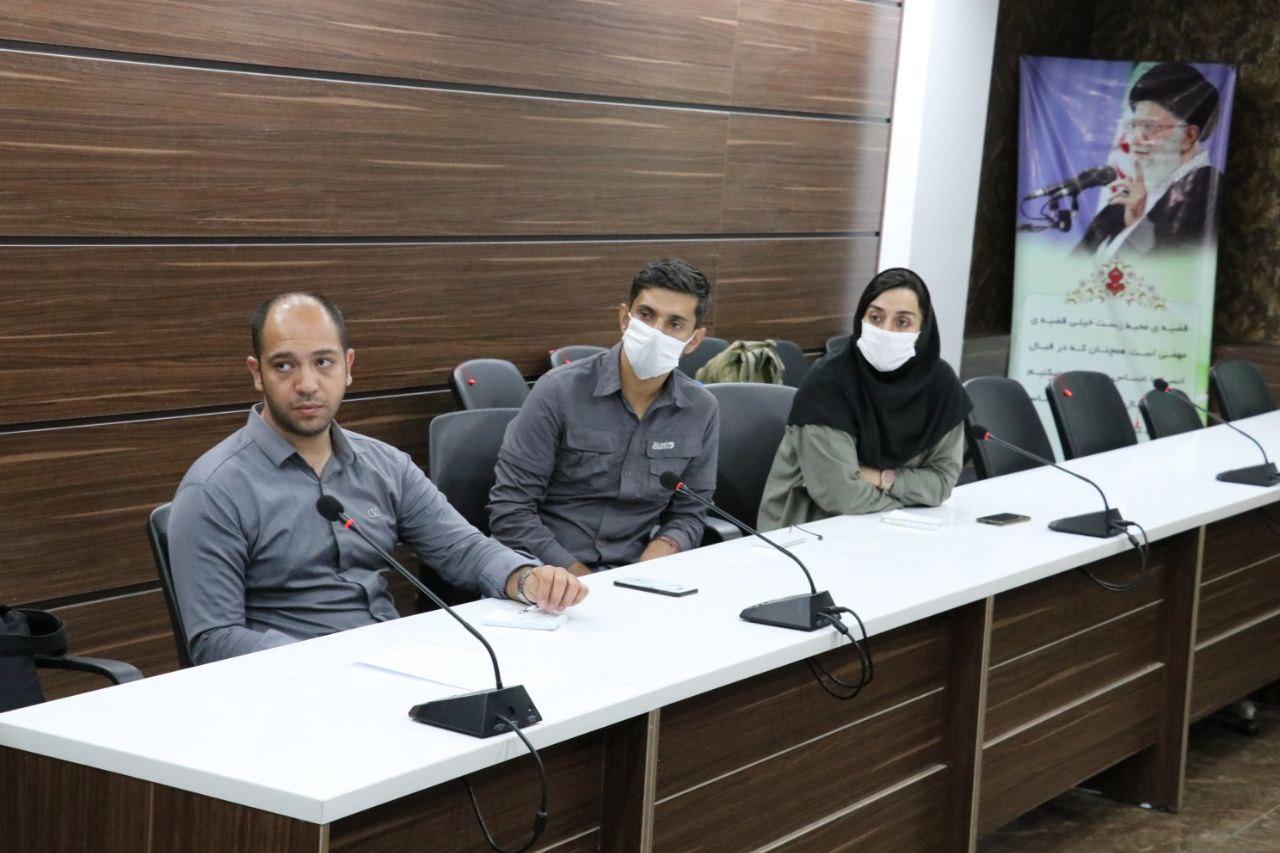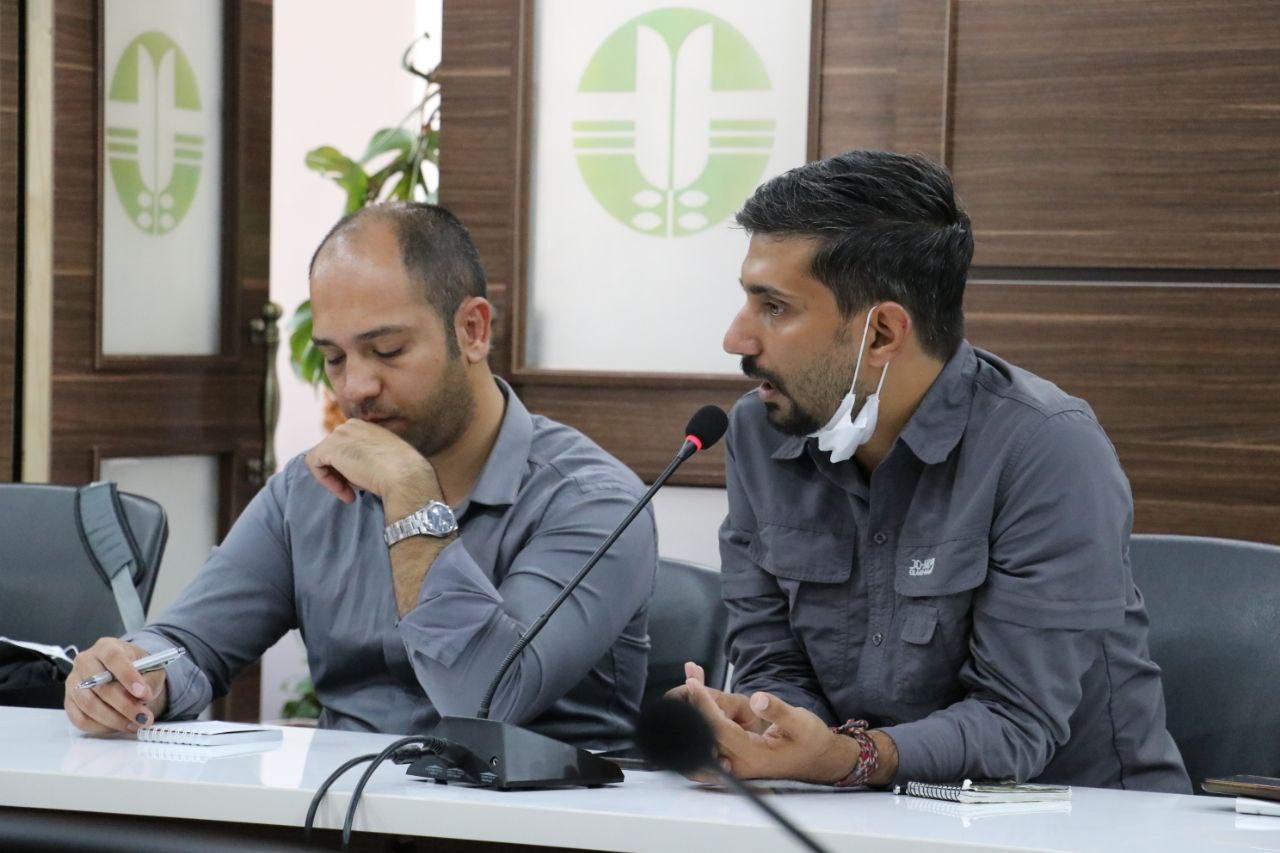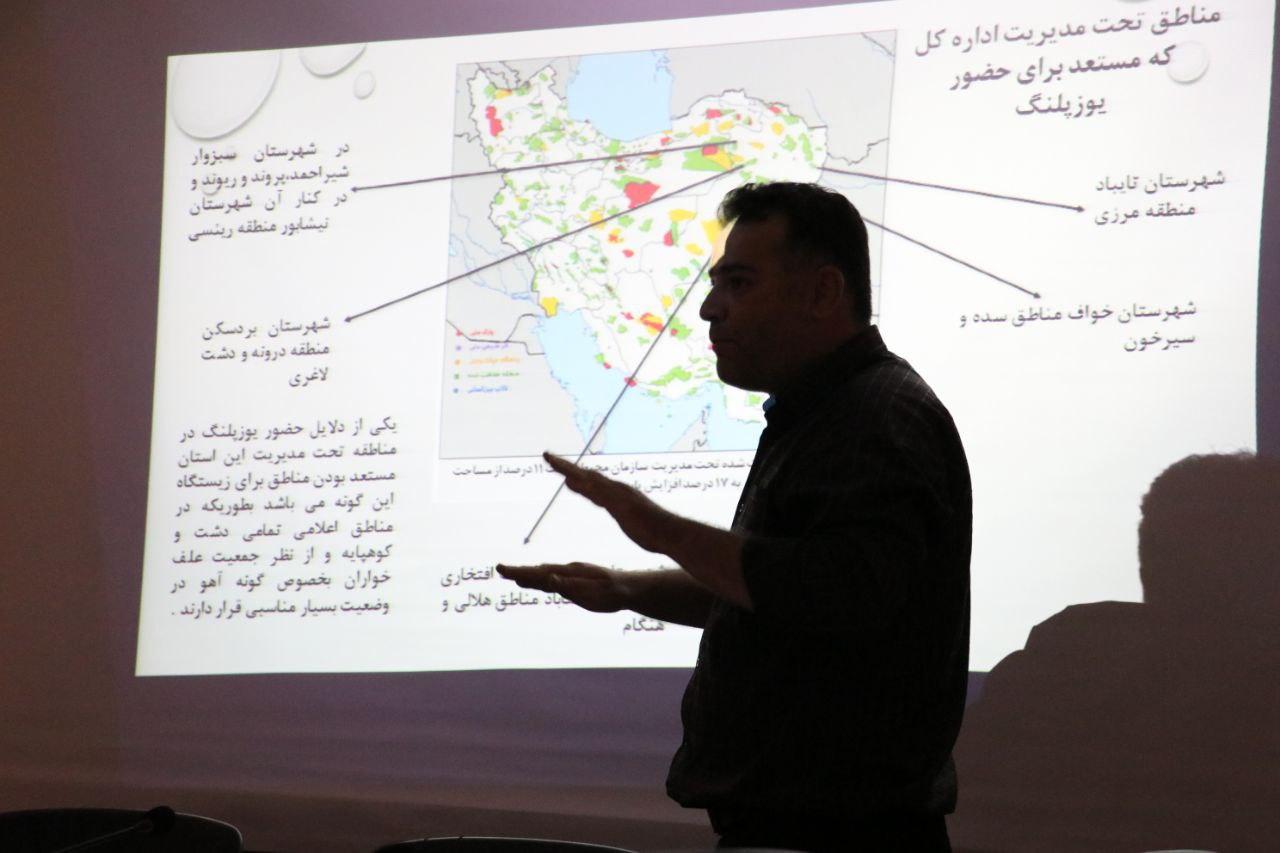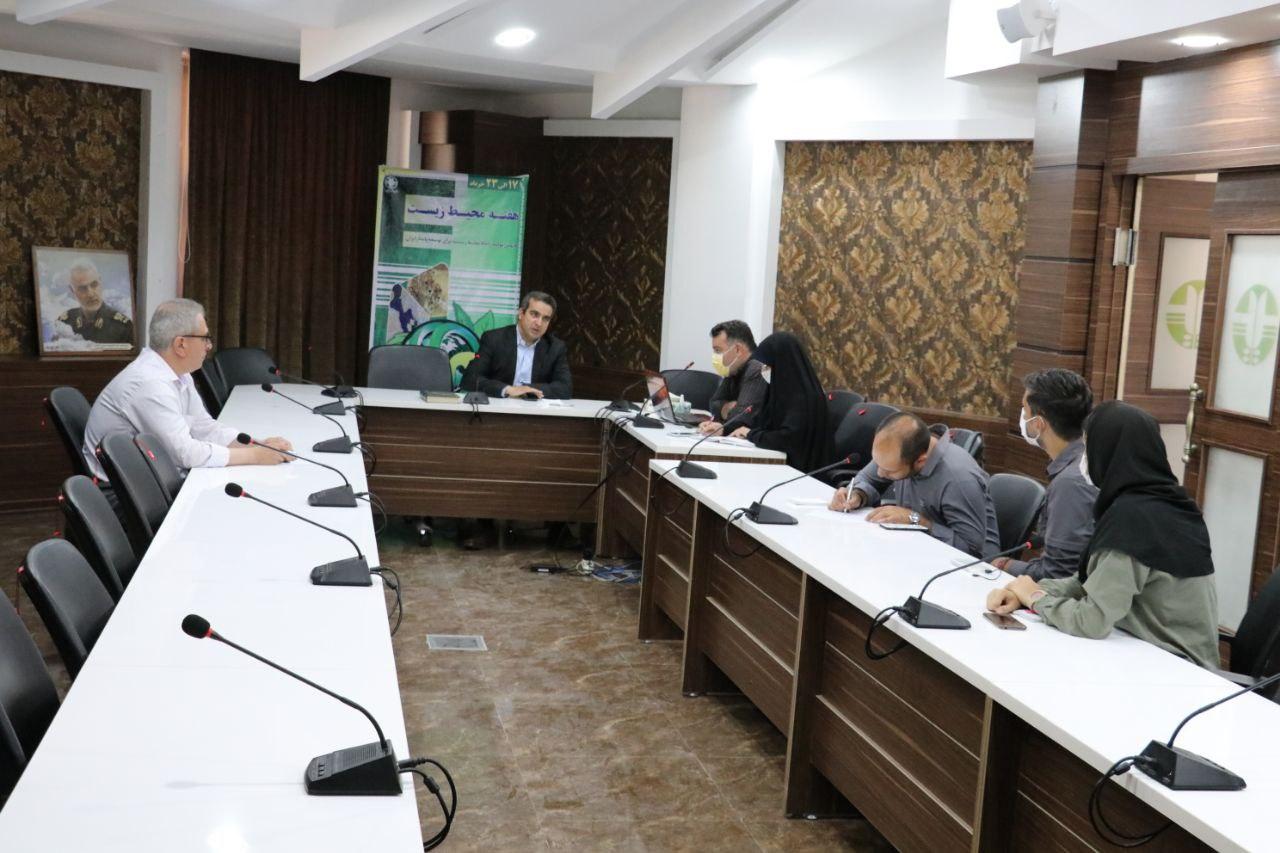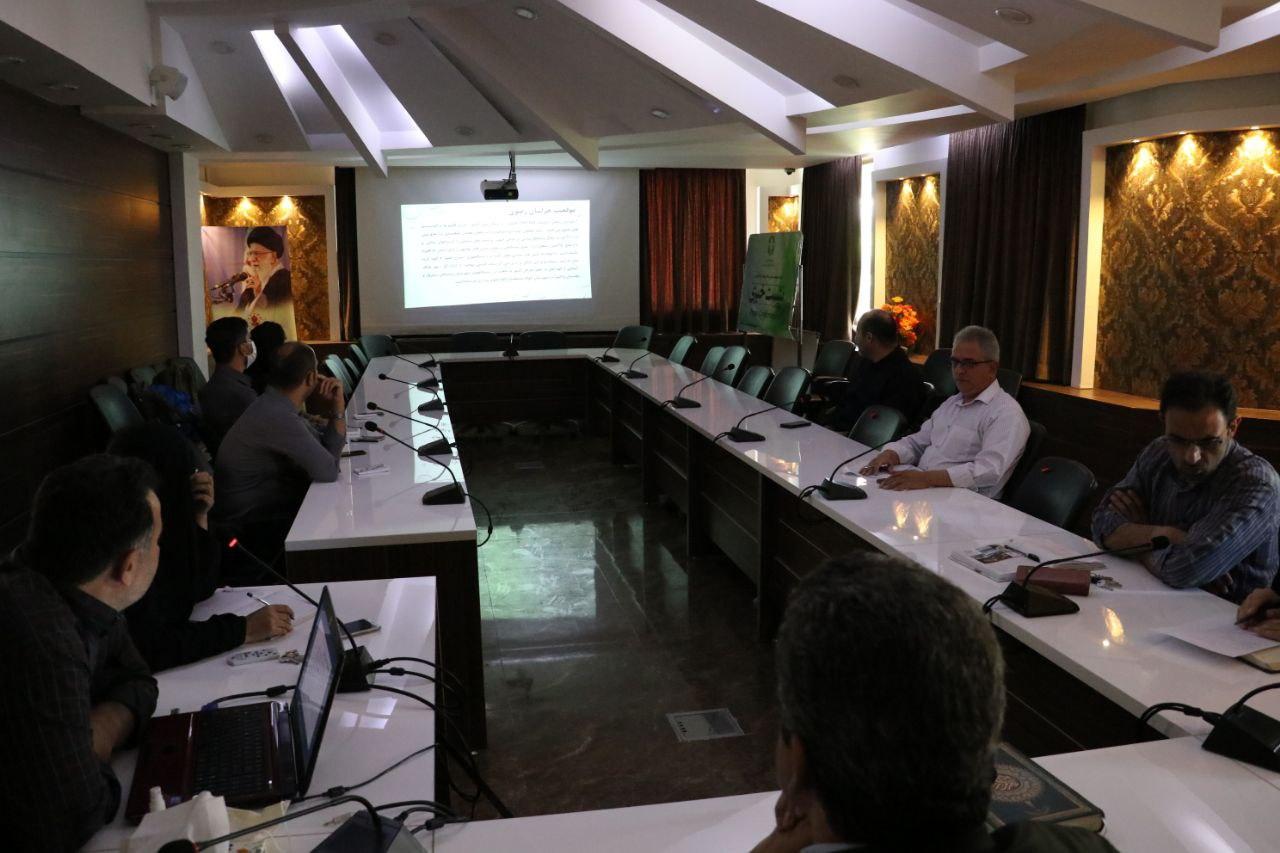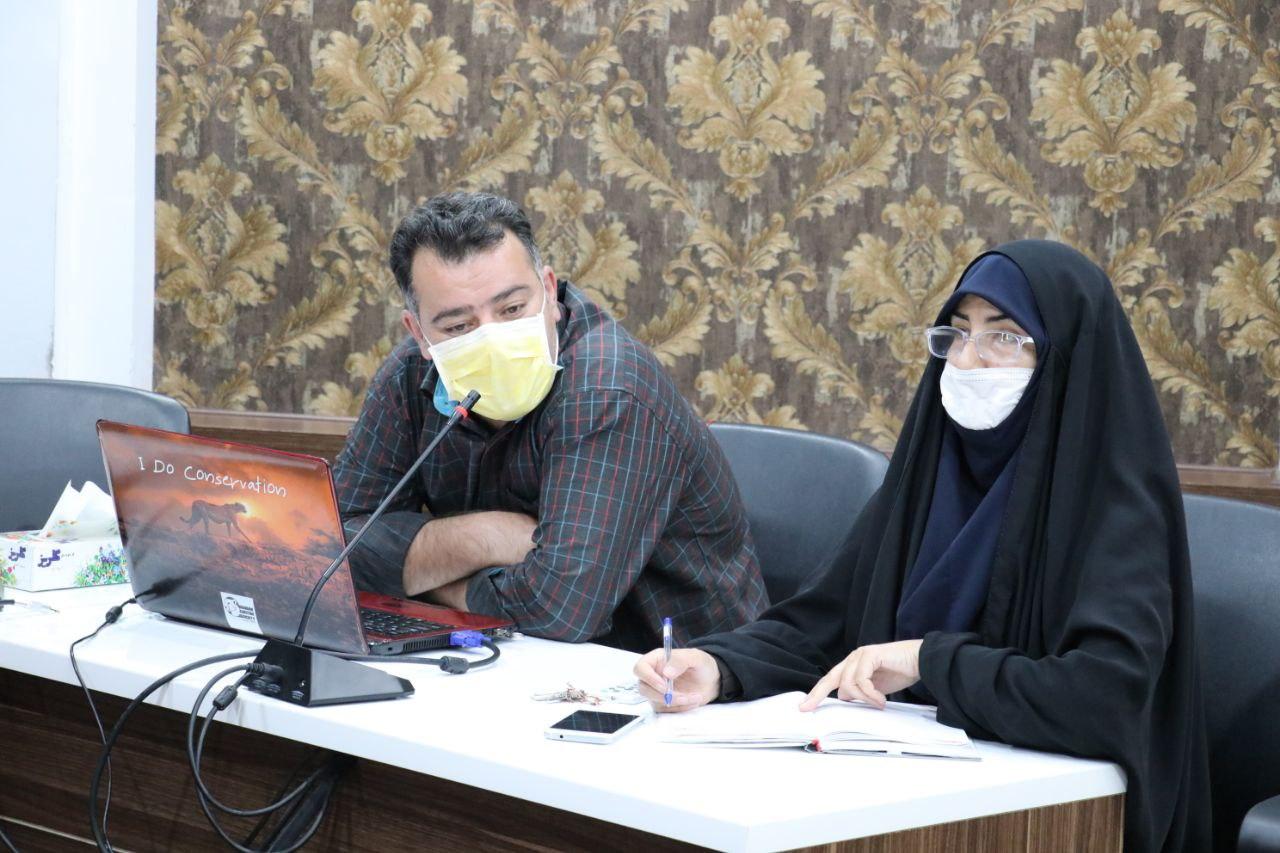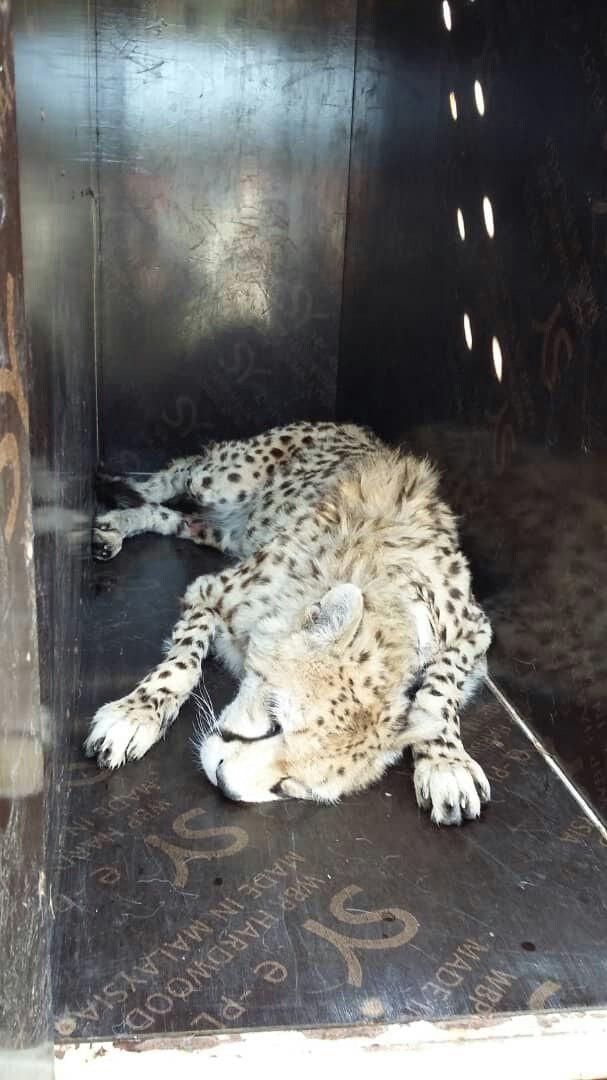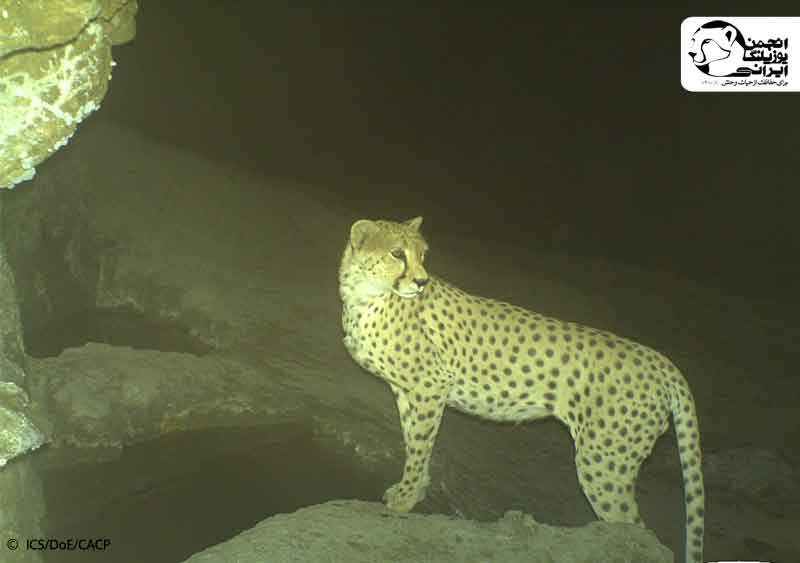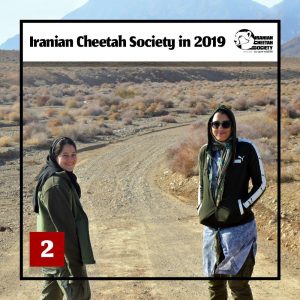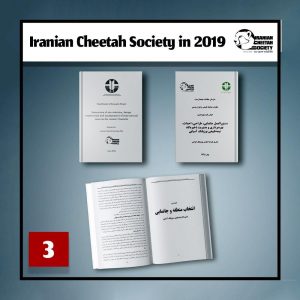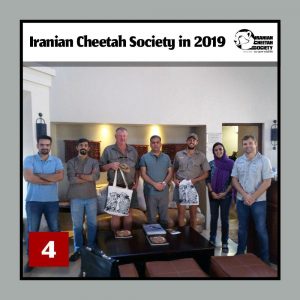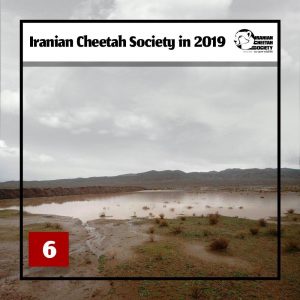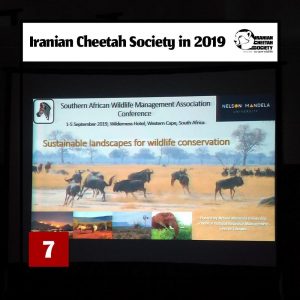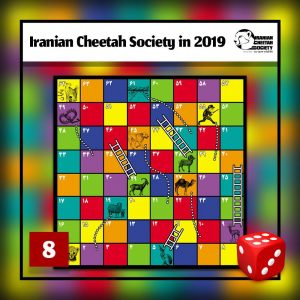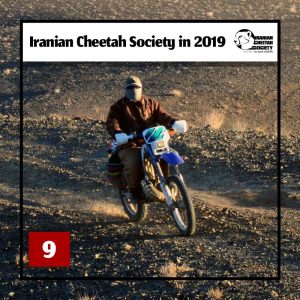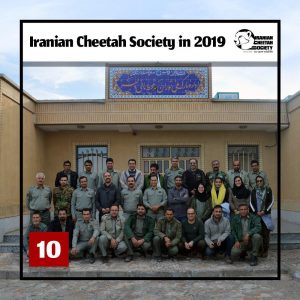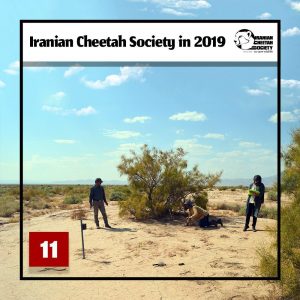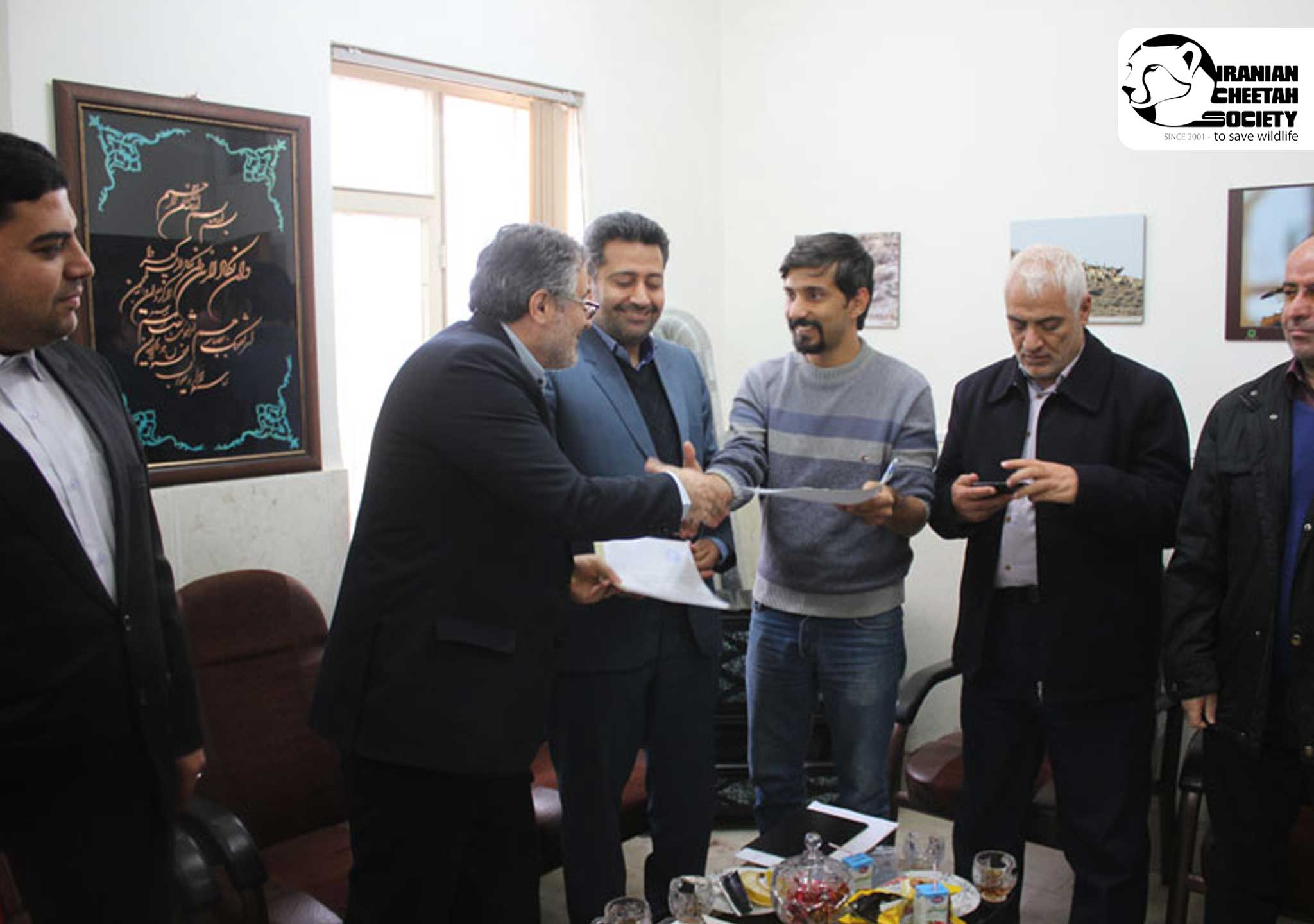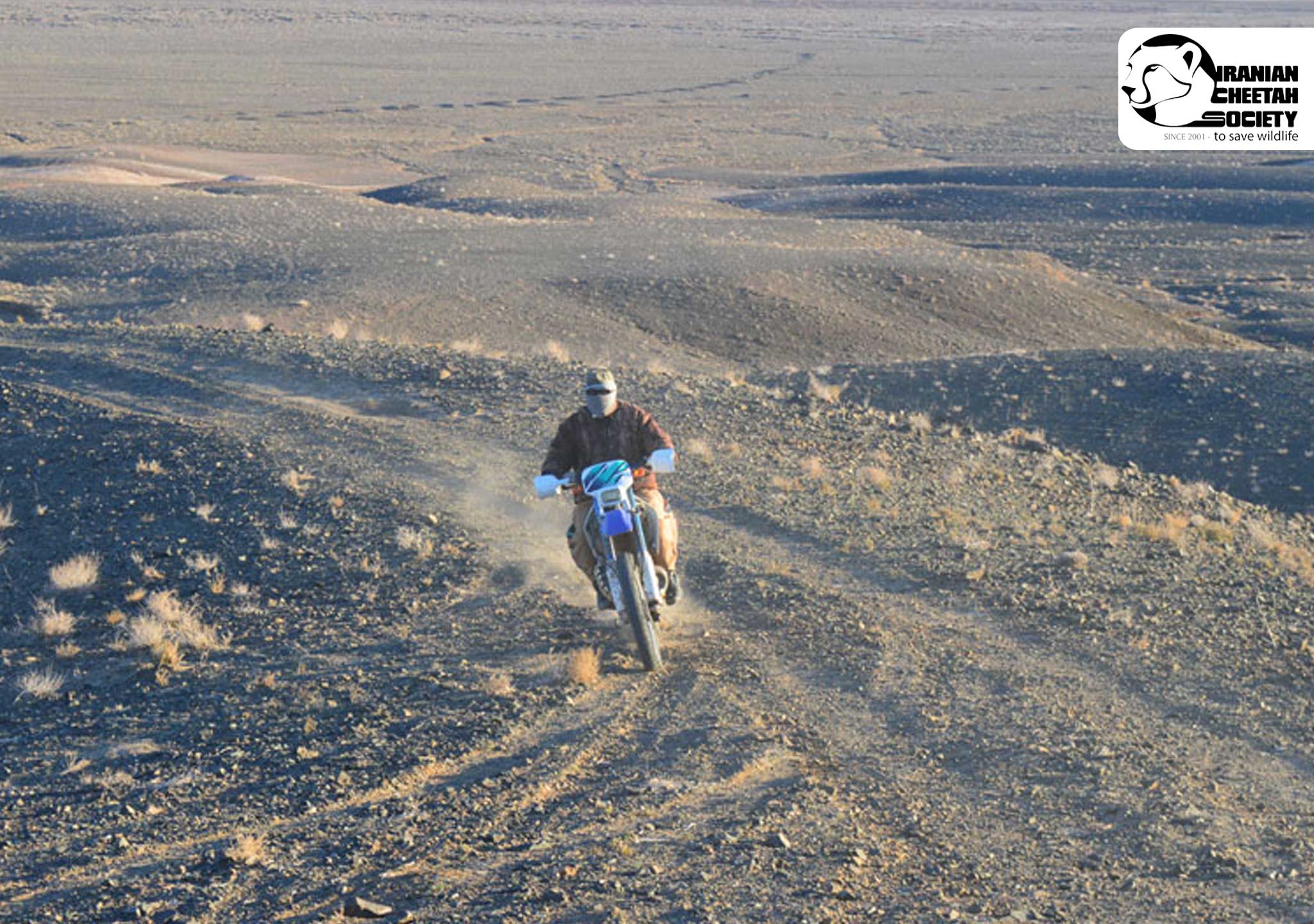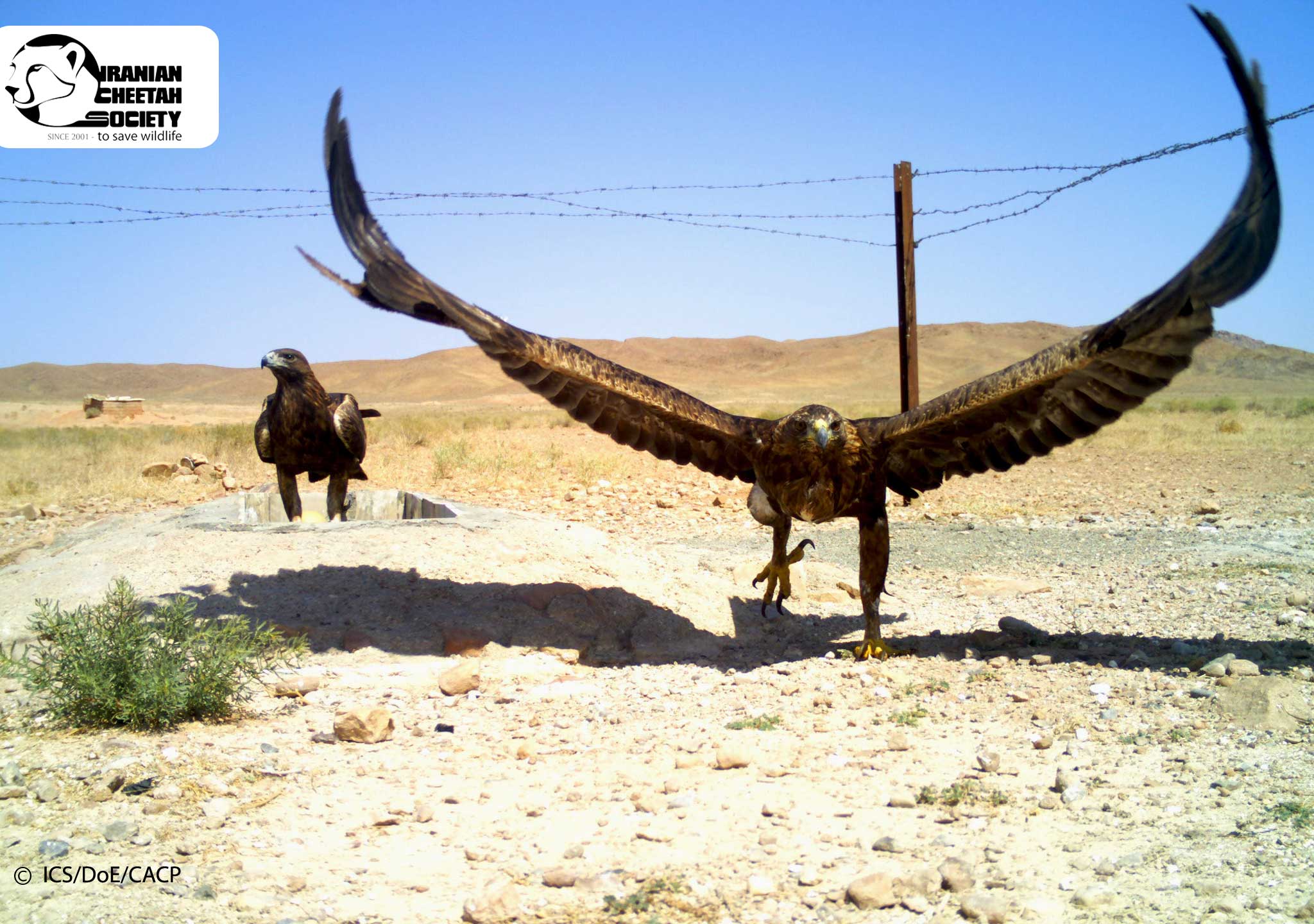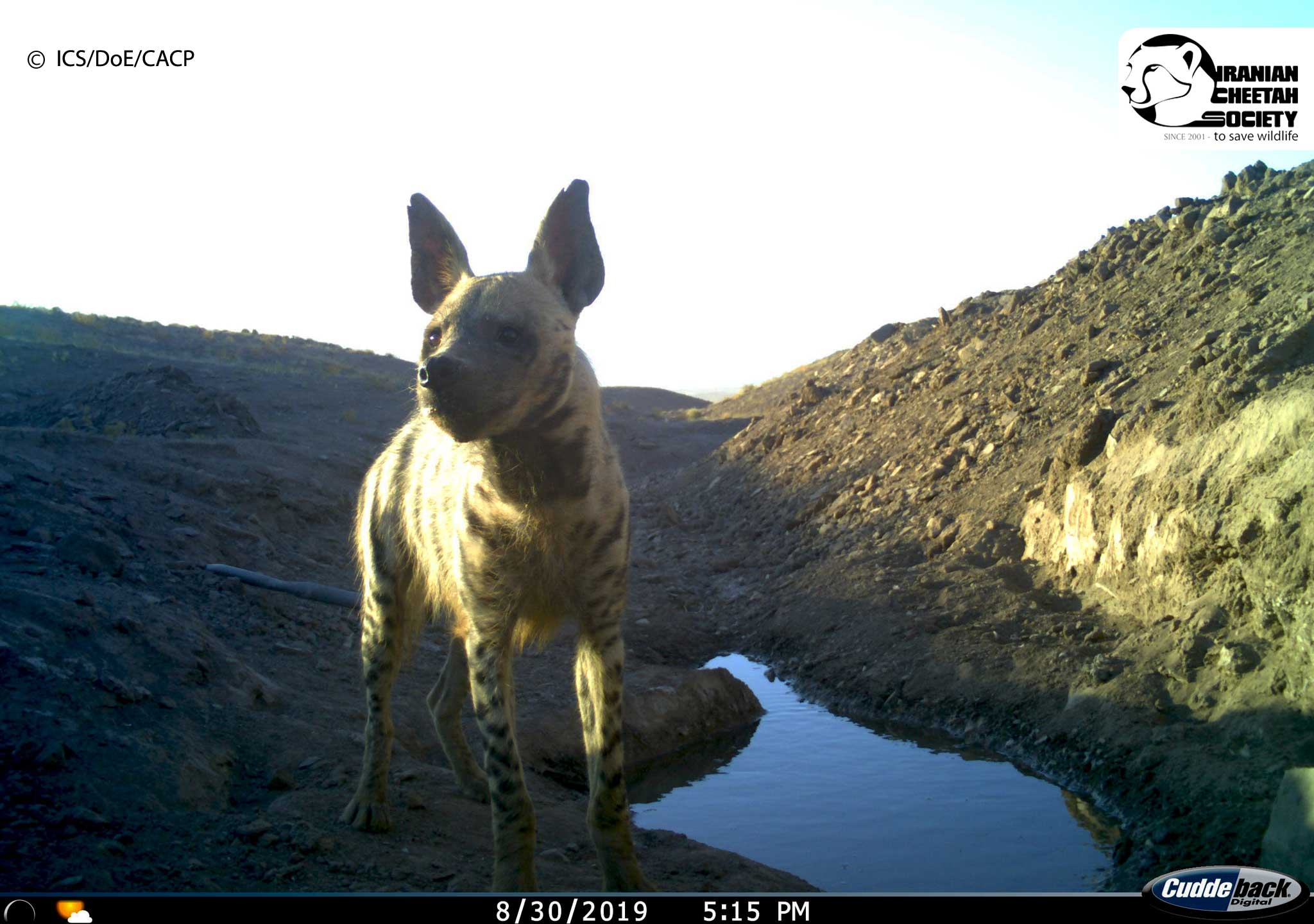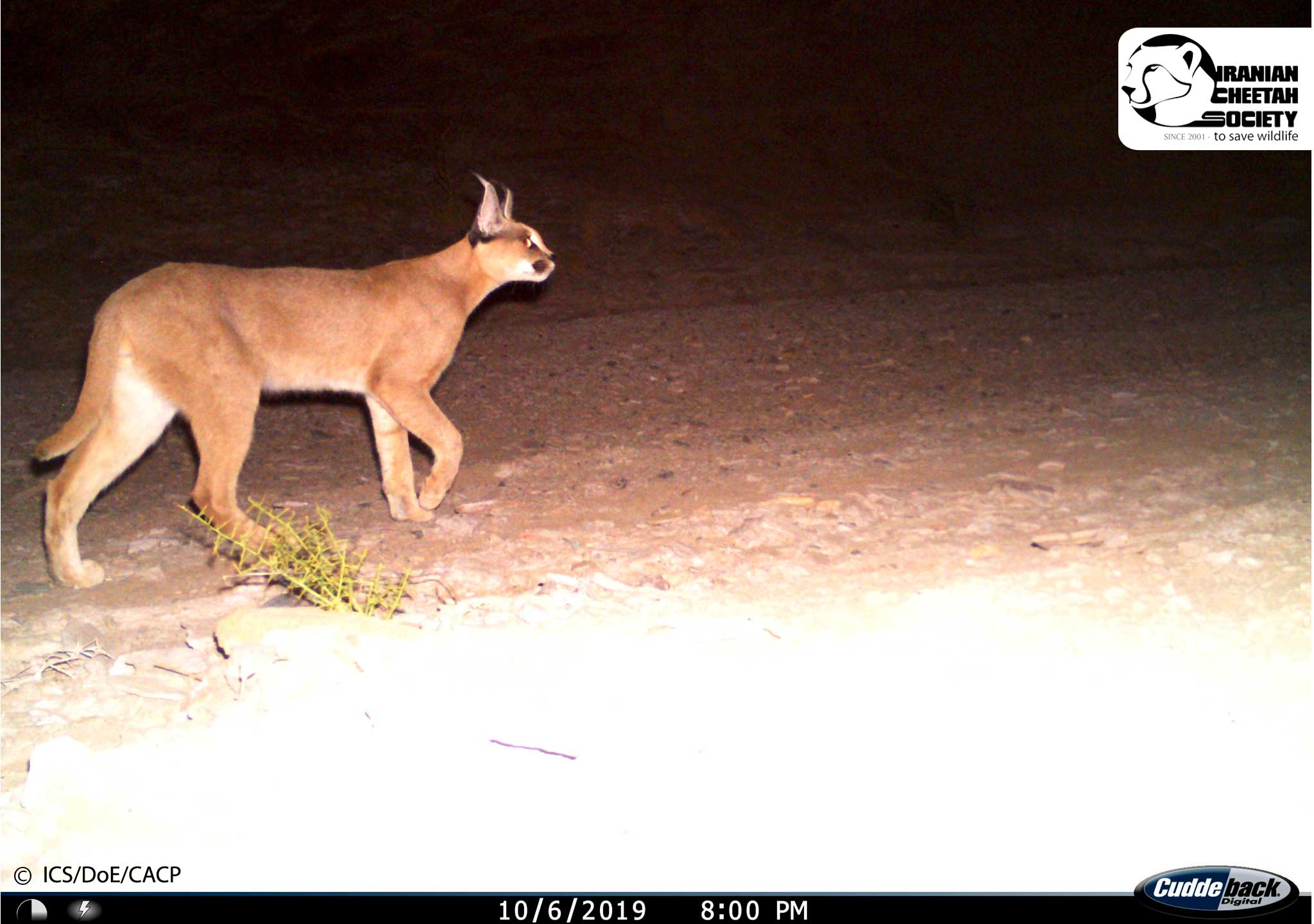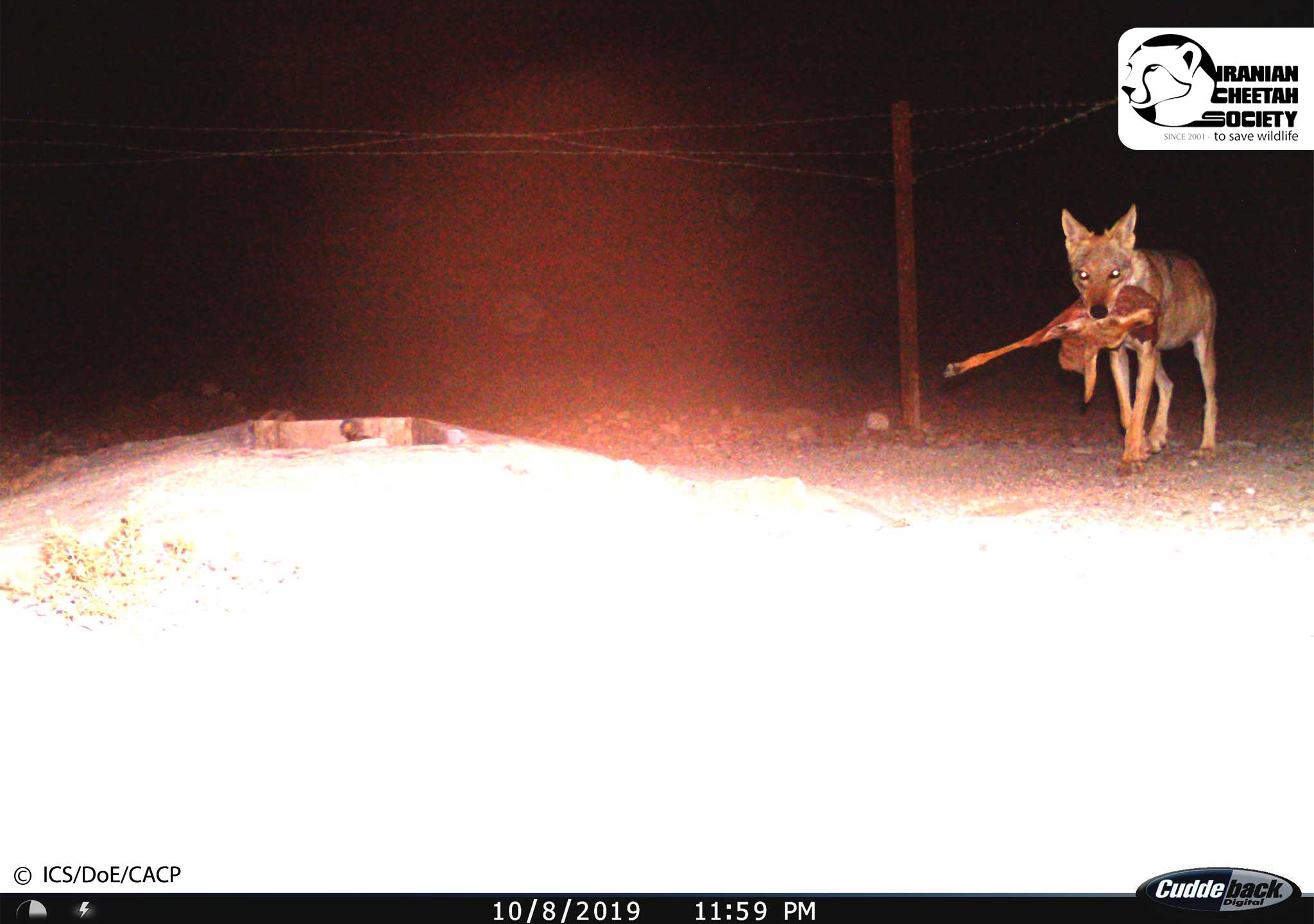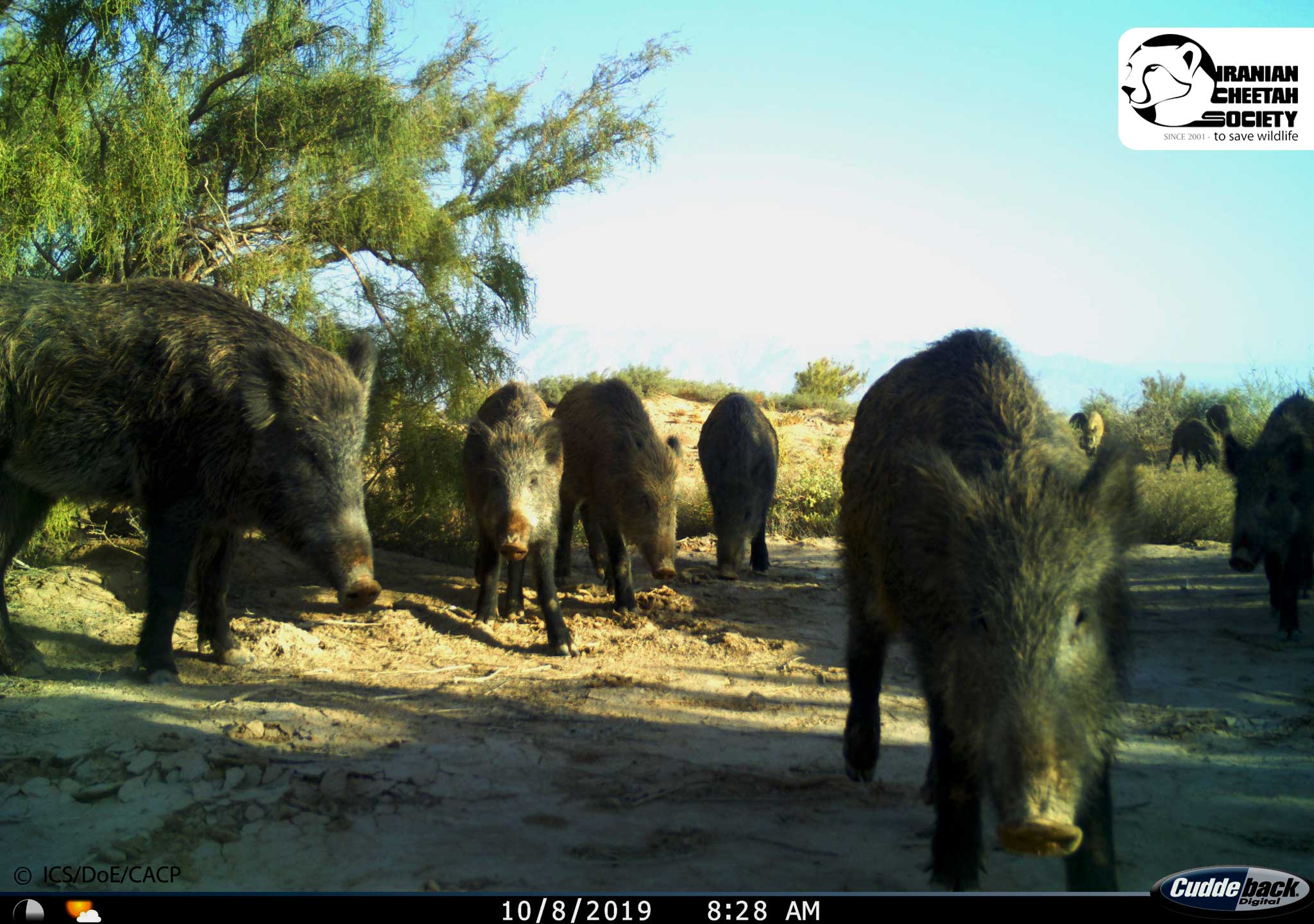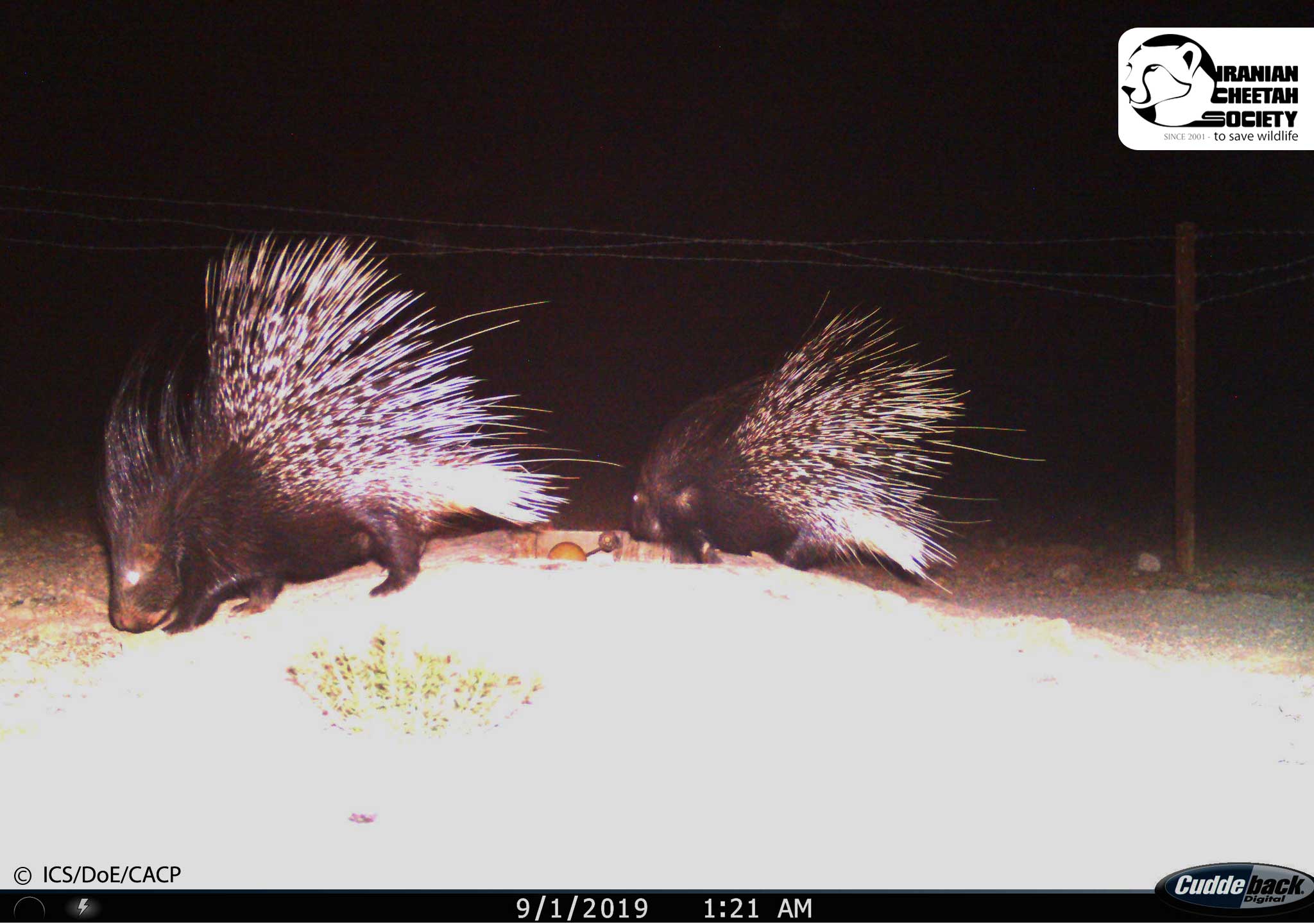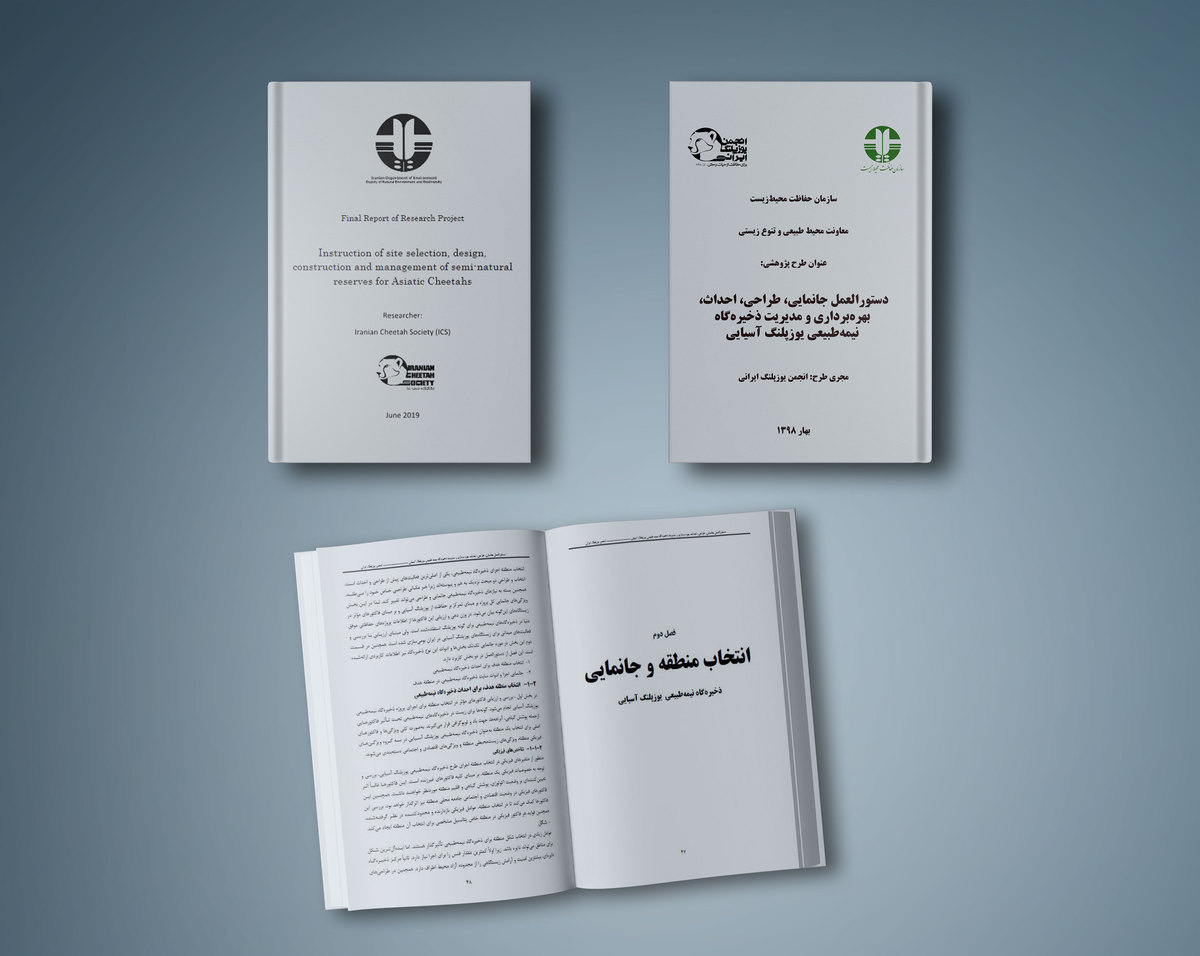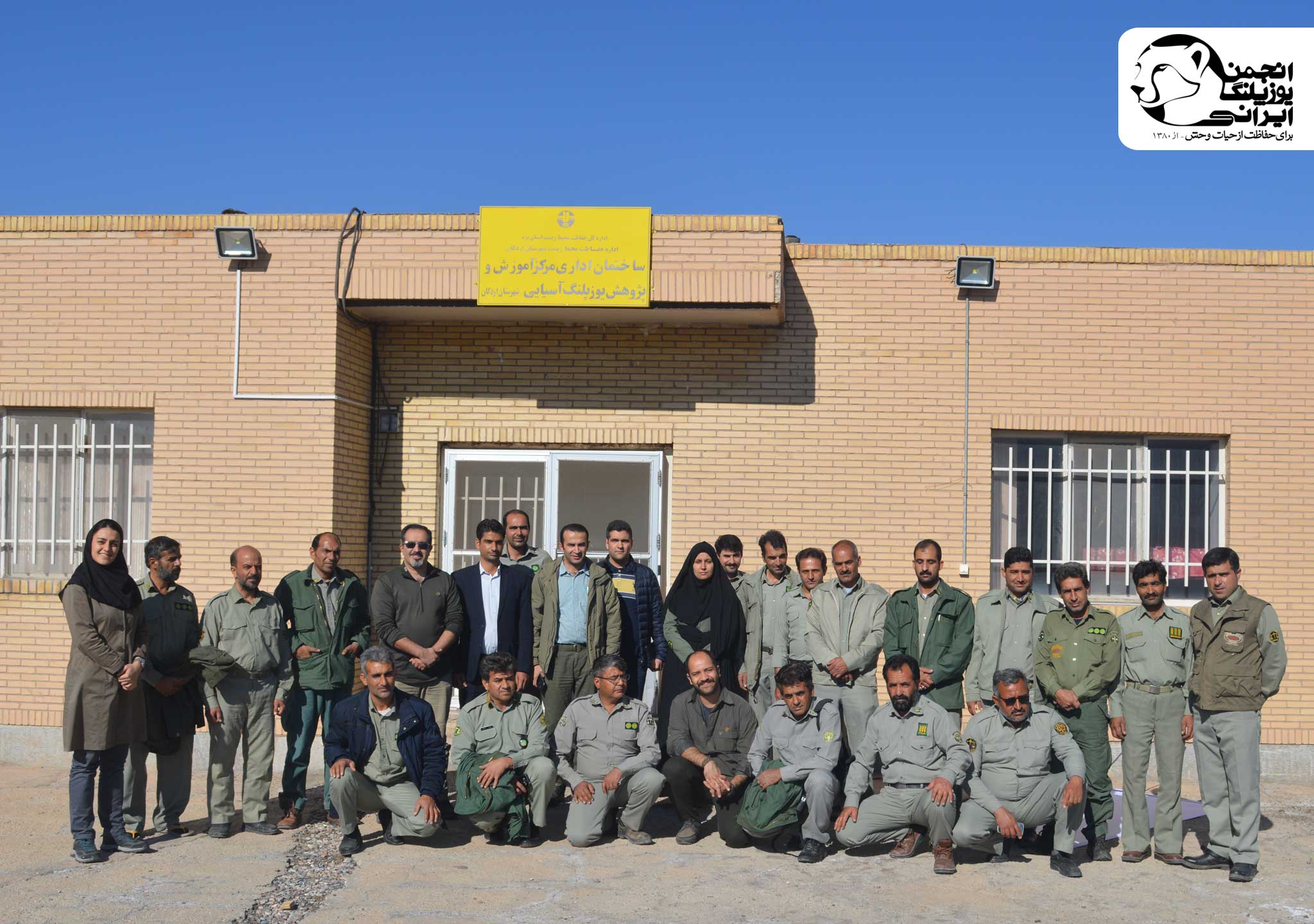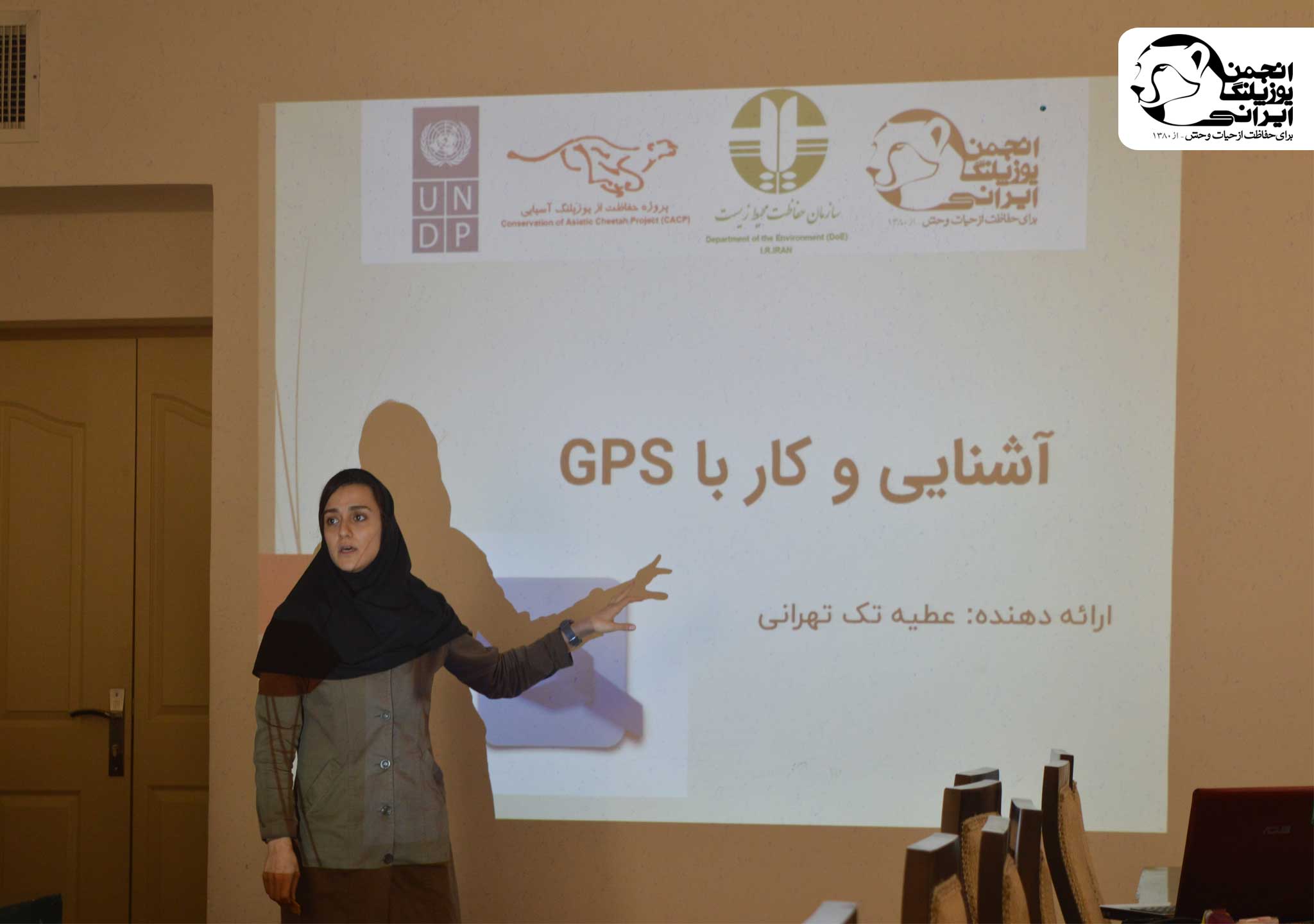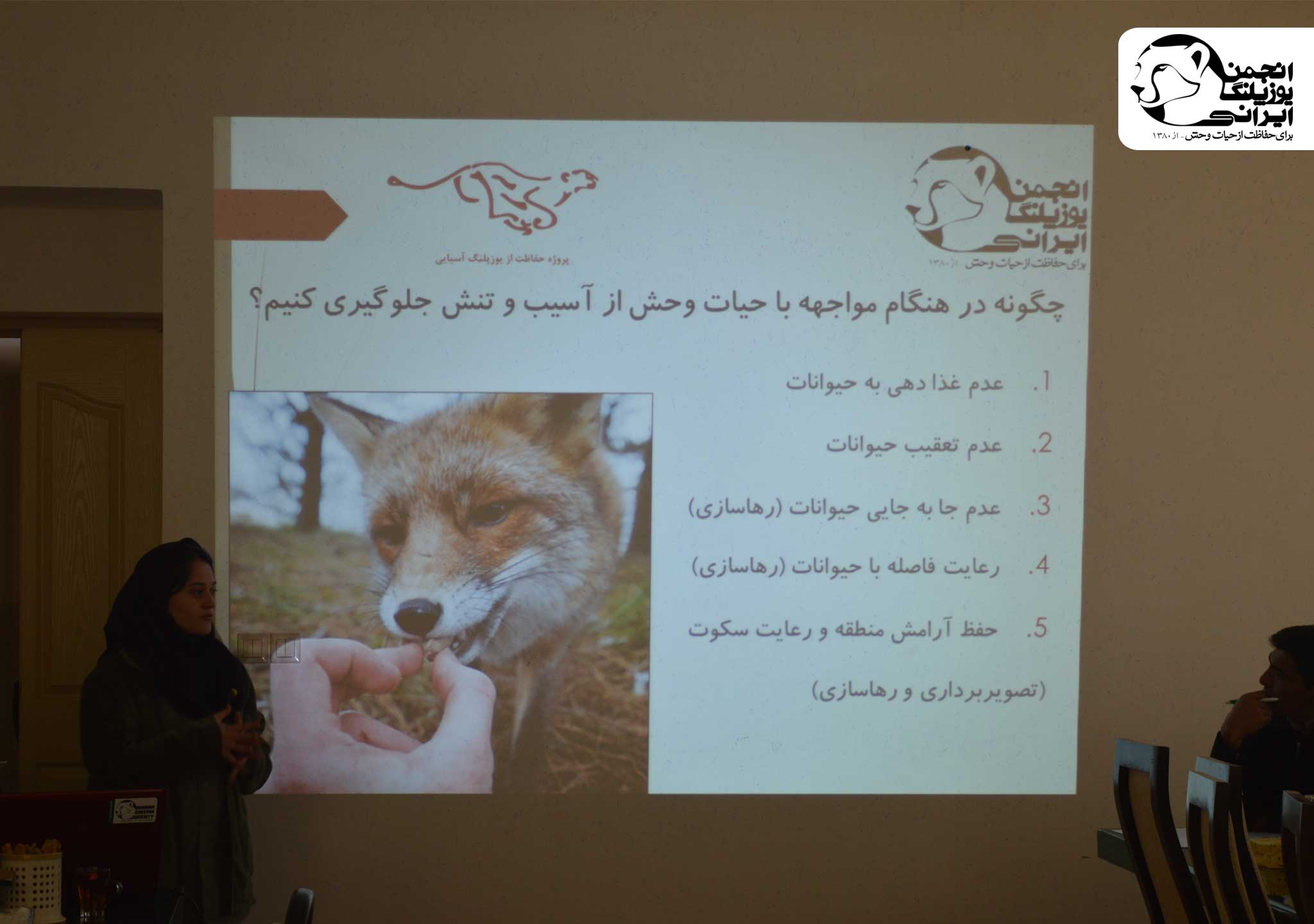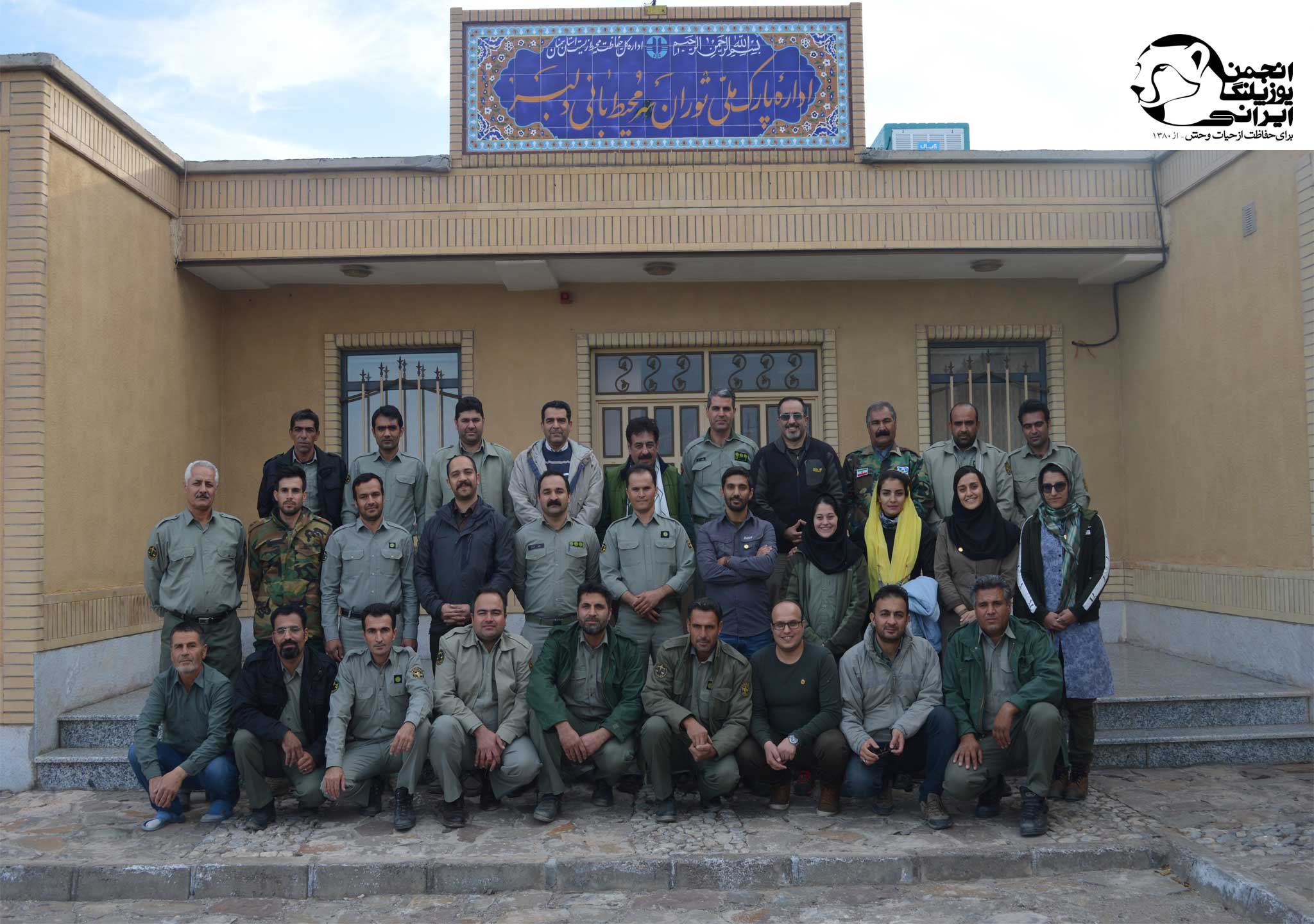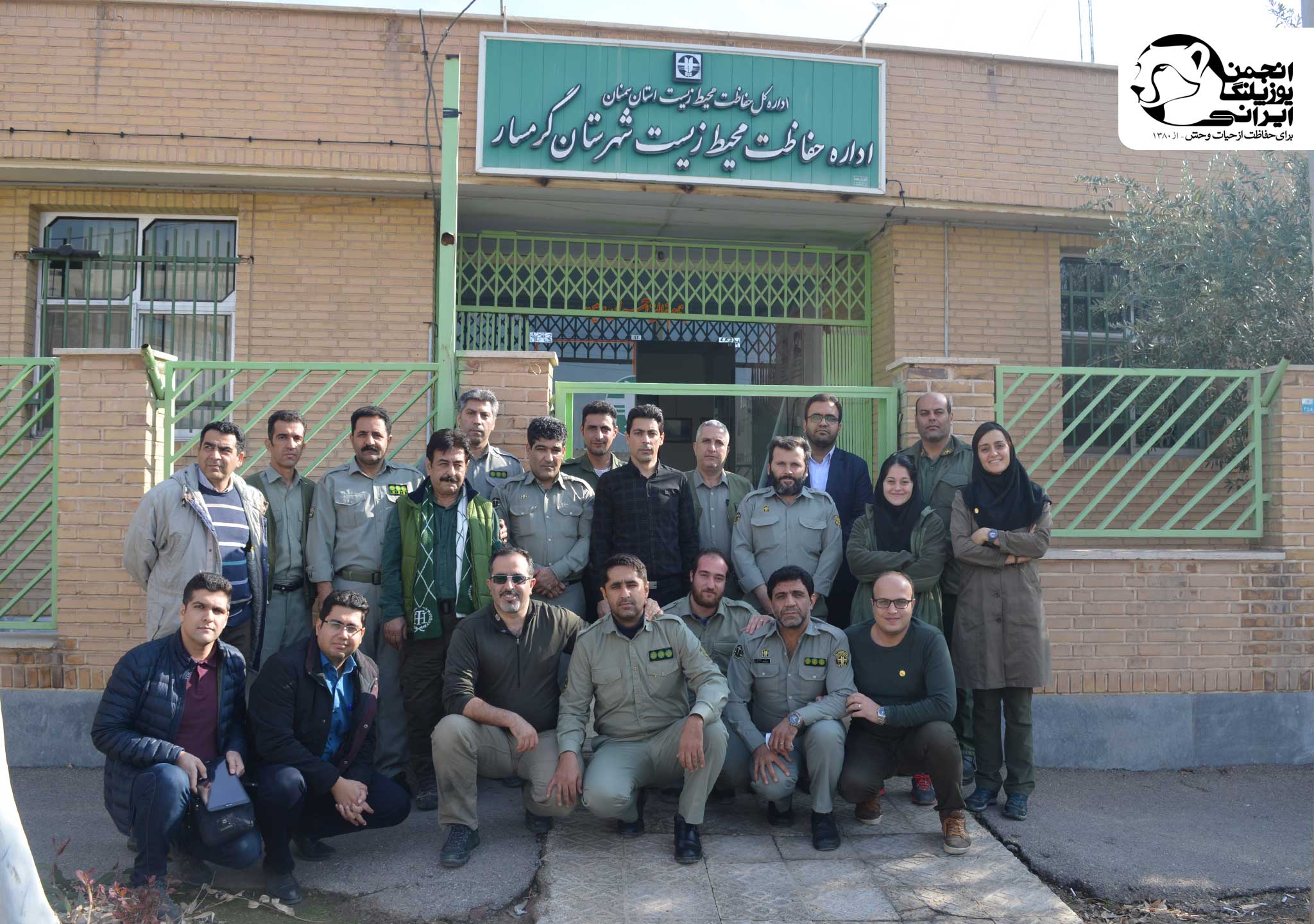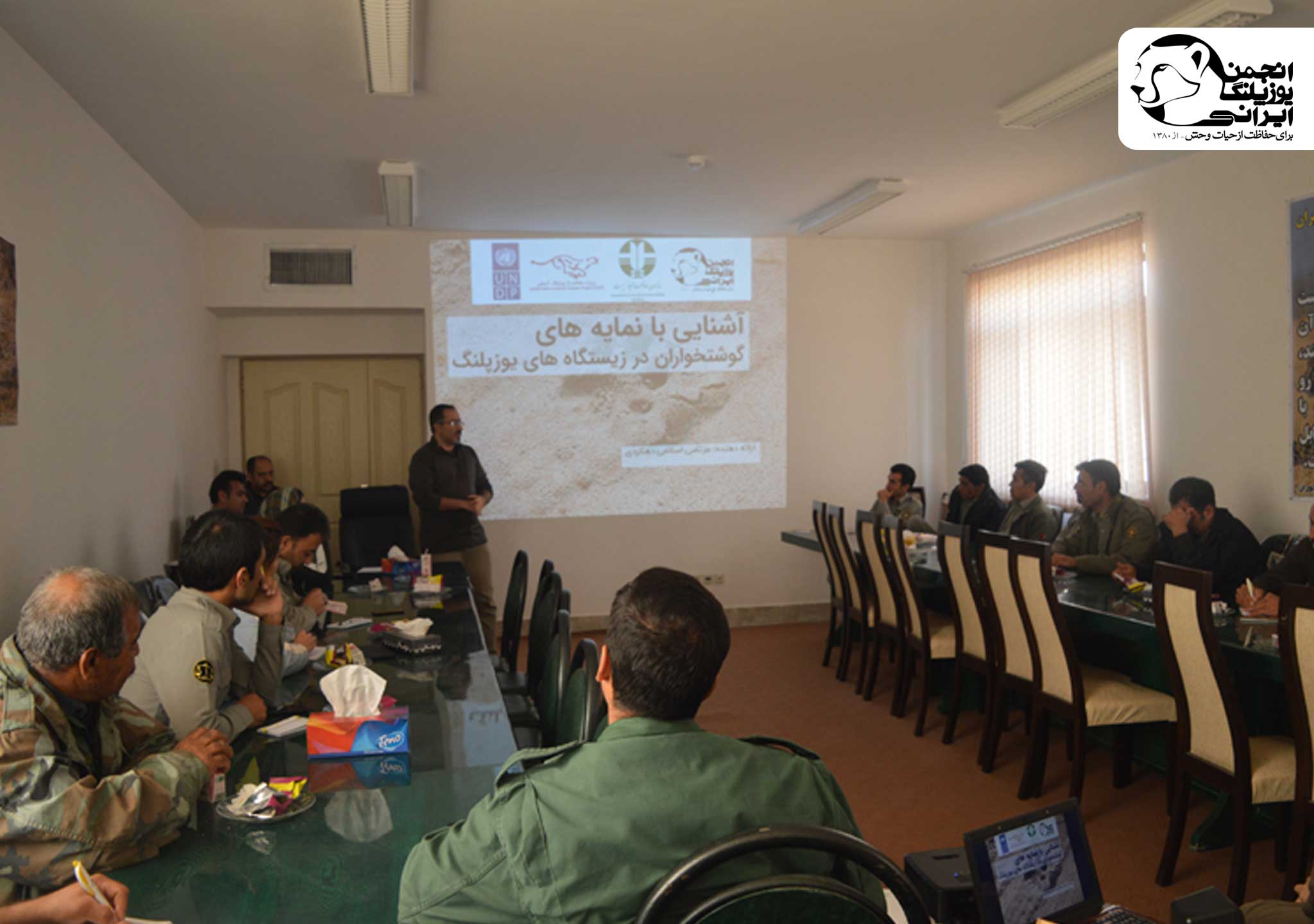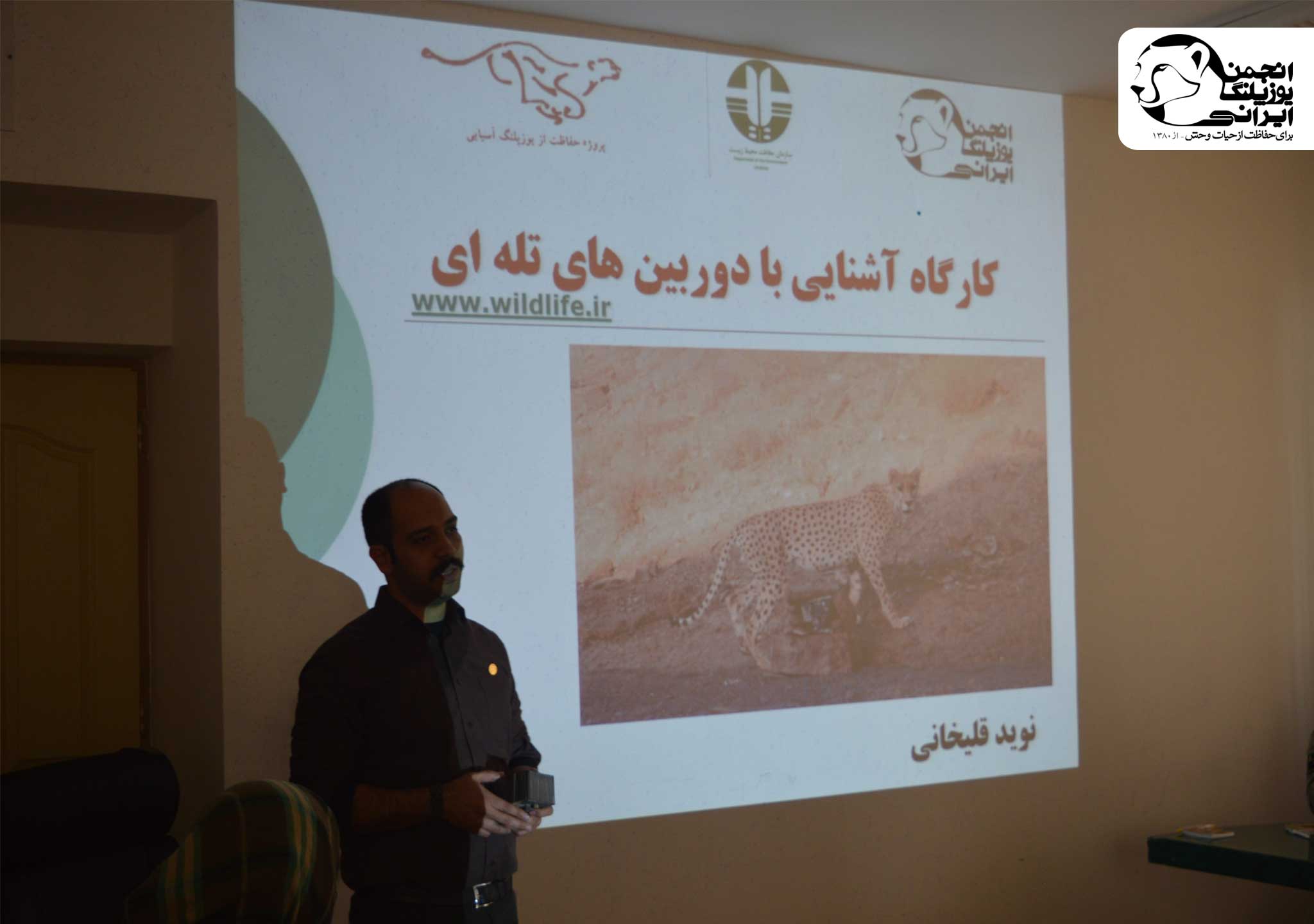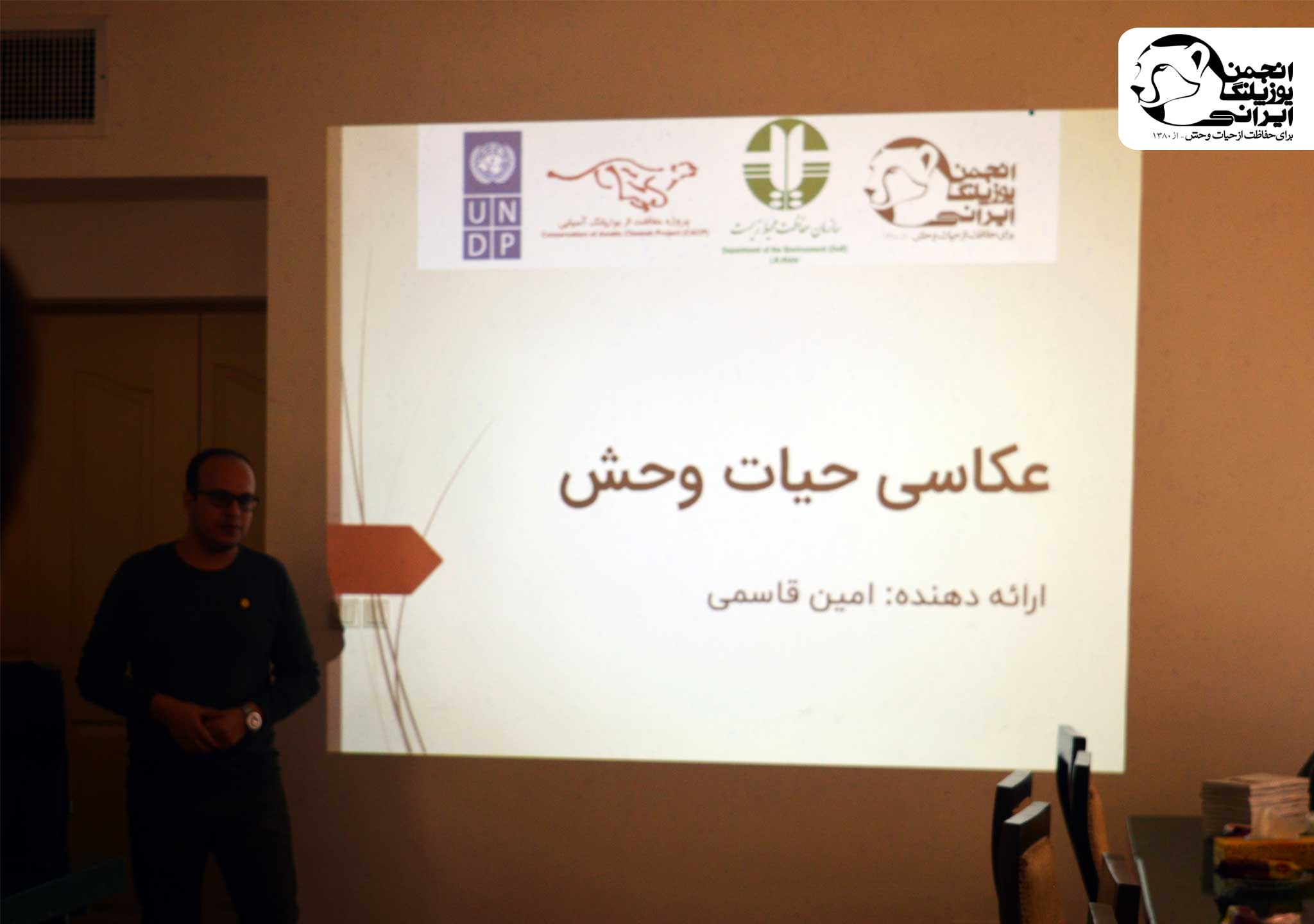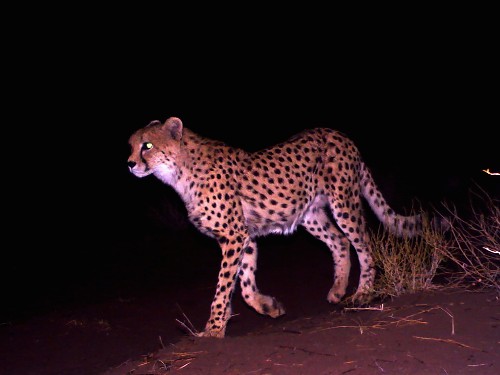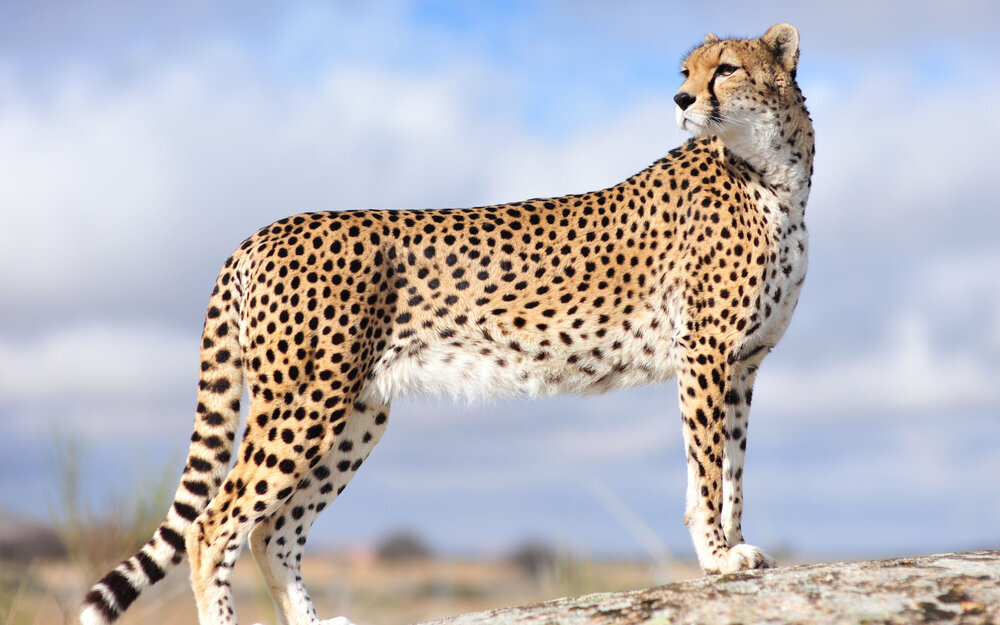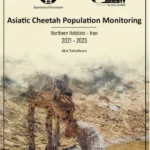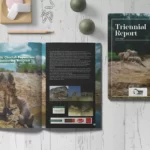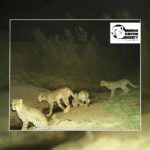Habitats of Khorasan Razavi province have always had confirmed reports of the presence of Asiatic Cheetah. Data on the presence of this species have been recorded in areas such as Bardaskan, Khaãaf, Taybad, and Sabzevar counties in recent years. These data were intermittently recorded over the years, making it difficult and impossible to make conservative plans. In order to design a propitious program in the province, it is necessary to conduct field studies in a scientific and continuous manner.
Therefore, a meeting was held earlier this month with experts from Khorasan Razavi DoE and the ICS, and aspects of cooperation were discussed. According to arrangements, the ICS will carry out new studies in this province as part of its program to conserve northern habitats of the Asiatic cheetah. in a more integrated way with the companionship of experts from the DoE. Certainly, collecting scattered data from other cheetah habitats will help to increase knowledge about the unstable situation of cheetahs in Iran. This is a goal that the ICS is pursuing within the framework of the “Explorers of Hope” project.
The transfer of cheetahs from Pardisan Park to Turan National Park
In this regard, alongside expressing its resolution on this topic, the ICS, as a nonprofit institution tries to clarify some vague aspects of the issue as following:
– The recent actions have taken place through the project of cheetah reproduction in semi-natural condition. A project that has a long and successful history in African countries. In Iran, for the first time, Mr. Jurabchian as project manager of the Conservation of Asiatic Cheetah Project (CACP), raised this issue and proceeded to fencing the area in Miandasht wildlife refuge. After that Dr. Akbari, of Natural Environment deputy of Yazd Province, and Hooman Jokar, Project Manager of the CACP, expressed their optimism about the subject.
– In 2018, Mr. Zohrabi, Natural Resources deputy of the Department of Environment (DoE) at the time, held a series of meetings with veterinarians, university professors and experts living inside the country and abroad to examine options for cheetah conservation outside the habitat. Following the analysis and the pros and cons, the DoE decided that these options should be pursued in parallel with habitat protection and that previous efforts should continue.
– Following the request of DoE, the draft proposal to setting up and managing the semi-natural reserve, which was previously prepared by Mr. Jokar in the DoE, was submitted to the ICS for completion. The ICS prepared the activity description, a schedule, etc. This plan was written in such a way that the DoE or any of its provincial administrations could implement it by themselves.
– In September 2017, the ICS planned a trip to send its experts along with the Natural Resources deputy of the time and DoE specialists to visit and observe the achievements of South Africa. The ICS tried to introduce successful conservational experiences of South Africa to DoE authorities.
– The unofficial news and information release about the process of anesthesia and the transfer of cheetahs led to the same result that the ICS had warned about. Some misinformation published on social media caused a wave of discontent and apprehension. This ambiance created a great social cost for the DoE and the project. The ICS asked its consultants (who manage 380 cheetahs in more than 70 areas across South Africa) about the quality of the box conditions and the transfer process, and they confirmed the quality of the box and the device by viewing the photos published on the Internet.
– Cheetahs of Pardisan are on a high-risk and fateful path, and it is necessary for experts, including ecologists, veterinarians, etc. to play an active role in the success of the project.
– Reproduction project in Turan National Park, considering the lessons learned by Pardisan Reproduction Center, can increase its chances for success.
– The reproduction project in Turan National Park, considering the lessons learned by Pardisan Reproduction Center, can increase its chances for success.
– From the ICS’s point of view, the ideal conditions for cheetah reproduction are at least 1,000 hectare fenced area. According to the ICS’s planning in completion of the previous CACP plan, training female cheetahs for hunting should be on the agenda.
– The ICS, in consultation with its consultant, which manages the metapopulation program in South Africa, supports the method of reproduction in multi-thousand-hectare fences located in the natural habitat called reproduction in semi-natural conditions as a necessary approach.
In the end, the ICS and the Environmental Society expect the DoE of Iran to take responsible behavior and to implement the principle of participation by seeking synergetic cooperation of experts and members of the media.
Iranian Cheetah Society in bird’s eye view (2019) :
Three thousand (3000) of each poster was published and distributed in schools, organizations, and habitats of Asiatic Cheetah by our members and audiences, the municipal administration office in Tehran helped us distributing the posters all over Tehran.
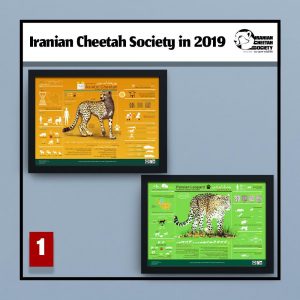 In the middle of the last year (2019) , four trainees were recruited to get experience in working in the wildlife conservation association . They participated in the first course of traineeship for six months and now they have joined and had activities to the association as experts. The Cheetah Association hopes to repeat this course to other interested volunteers in this Year 1399 .
In the middle of the last year (2019) , four trainees were recruited to get experience in working in the wildlife conservation association . They participated in the first course of traineeship for six months and now they have joined and had activities to the association as experts. The Cheetah Association hopes to repeat this course to other interested volunteers in this Year 1399 .
Instruction of site selection, design, construction and management of fenced reserves for Asiatic Cheetahs in Iran:
Recent findings show that there are less than 40 Cheetahs (Acinonyx jubatus venaticus) left in deserts of Iran. Regarding this fact, the Iranian Department of Environment(DOE) decided to deliberate options to save the last individuals of Asiatic Cheetahs in the country.
After numerous meetings, workshops, and site visits, DOE concluded that South Africa’s experience with fenced reserves might be a potential solution to save Asiatic Cheetahs. Through this period, Iranian Cheetah Society (ICS) facilitated connection and information exchange between DOE and South African reserves and experts.
Meanwhile, it was so crucial to have a clear guideline before starting any constructions of fenced reserve based on global experiences on breeding Cheetahs.
There was no comprehensive and accessible instructions or manual to demonstrate steps needed to establish a fenced reserve in Iran. That was essential to have this guidance for site selection, design, construction, and management of a fenced reserve for Cheetah.
After an official request by DOE, ICS made a comprehensive survey on all available data on planning and managing the fenced reserves. All research was focused on enhancing the reproduction chance in the future reserve. Various articles, protocols, reports, books, and manuals being used to prepare the final report.
In the end, we optimized procedures and structures with local laws and Asiatic Cheetah’s ecology.
On the importance of water matters, in September of 2019, there was a chance for the experts of the Iranian Cheetah Society (ICS) to take a trip to South Africa with the deputy of the natural environment. We tried to get acquainted with the achievements of one of our peer organizations, and the conditions in which they were successful in “breeding” and “rearing” Cheetas. In this trip, we saw Cheetahs that have been fed by humans when they were cubs, but then after puberty, they were taught to hunt, labored in the wild, and raised their cubs. Such experiences helped us to have a more vivid vision for the semi-captive breeding of Asiatic Cheetah.
The management of water resources in cheetah habitats which have faced drought has been an issue of concern for the Cheetah association during this decade. A local person has been employed as a water supplier at the Miandasht Wildlife refuge for five consecutive years by the Cheetah association and its supporters. During the hot and dry months of the year, he is in charge of supplying water in the trough and other related duties, such as cleaning and repairing; so rangers cannot be kept from their legal and regular duties and patrol.
Another project that took place last winter at the Miandasht Wildlife refuge, and continued in this year (2019 ) , was the construction of a dam on seasonal stream route . During these two years, a total of 12 dams were built by the association. The construction of these dikes, which are based on indigenous knowledge, have duty of collecting surface water that would become flood during rain. These 12 dams help to recovery vegetation in the area beside reducing erosion and losing fresh water.
All of the water management projects that have taken place over the years have provided valuable and reliable information for association experts to present their performance and results at the annual SAWMA conference in South Africa this summer. The presentation was also interested to the audience.
Educating locals and other beneficiaries on the edge of natural habitats is one of the most effective and valuable ways of conserving habitats and wildlife. Iranian Cheetah Society (ICS) corporated with the Conservation of Asiatic Cheetah Project (CACP) and prepared for the first time “Cheetahs and Ladders” the board game in 1398. Companions who attended our educational festivals would remember this game.
It should be noted that the manufacturing of the Cheetahs and ladders board game by the corporation of ICS and CACP was targeted for kids and teens. In this project, we considered other tools for target groups of women, kids and teens, NGOs, schools, educators, and other people related to the conservation of Asiatic Cheetah. The Conservation of Asiatic Cheetah Project (CACP) will hand out the accessories nearby the Asiatic Cheetah’s habitat in 1399.
Through the past twelve months, the Iranian Cheetah Society had focused on work in Miandsasht Wildlife Refuge in which due to its ongoing projects for cheetah conservation. We hired 2 new rangers in the area in order to help current 8 other rangers in patrols, livestock movement control, and examining wildlife tracking. The contract of this project was signed in early 2019 in attendance of the head of North Khorasan province DoE and Jajarm county governer.
Through the first contract, 2 people who were already familiar with the area and ranger responsibilities started work and increased manpower by 20%. The contract continued with only one of the 2 rangers.
The ICS bought a CRM motorcycle, repaired one of the existing motorcycles, funded fuel, and further repairs to facilitate the vehicle shortage in patrols. Read more…
Workshop for practical training and building capacities among rangers of Asiatic Cheetah reserves
In line with the objectives of ICS and following our collaboration regarding the Asiatic Cheetah Conservation Project (CACP), three workshops were held in the habitats of Asiatic Cheetah. The dates of these workshops were 28th of November, 5th, and 6th of December and the participants were rangers aiming to learn skills regarding the conservation of cheetahs.
The location of these one-day workshops were the Asiatic Cheetah Training and Research Centre in the town of Ardakan, as well as the Department of Environmental in Garmasr city and the Delbar rangers base in Turan National Park.
The participants in these workshops were from Darreh Anjir & Neybaz wildlife refuge, Siahkooh national park, Bafgh Mountain protected area, Hunting-Prohibited area of Bahabad in Yazd province, wildlife refuge of Darband Ravar in Kerman province, wildlife refuge of Naybandan in south-Khorasan province, wildlife refuge of Abbas Abad in Isfahan province, wildlife reserve of Miandasht in North-Khorasan province, Kavir national park and the Turan biosphere reserve in Semnan province.
The workshops were held to update and extend the knowledge of these rangers of Asiatic Cheetah habitat. The topics were chosen based on their usefulness for these people. For instance skills such as taking professional photos with phones, working professionally with phone GPS, spotting the tracks of carnivores in cheetah’s habitats, working with camera-traps, etc. In addition to these, some amount of information was gathered thanks to the contributions of participants.
Increasing the knowledge and the experience of rangers has a direct effect on their protection of wildlife reserves. In addition to all these advantages, their concerns and recommendations will also be shared with other people in the government.
ICS would like to thank all departments from provinces Yazd, Kerman, Semnan, Isfahan, North Khorasan and South Khorasan for their support and efforts regarding these workshops.
Re-monitoring of Miandasht’s wildlife refuge with trap-cameras reveals the worrying situation of Cheetahs’ survival. In the previous year, only one male cheetah has been photographed which sadly was deceased in a car accident later that year. Miandasht is a safe region with good resources for cheetahs but however it offers a little scope of land. Cheetahs dislocate a lot and that is a challenging matter in preserving this species. As our concern regarding the cheetah population has increased, we called upon Ministry of Environment and provincial departments to launch an urgent national re-monitoring of cheetahs program involving all relevant actors. So far provinces Khorasan Razavi, Khorasan Jonoobi and Semnan have expressed their willingness to contribute into this program. In the future, ICS will inform the audience about further news and publish more information about Cheetah’s population. Re-monitoring in Miandasht was carried out in August 2019 with the collaboration of Department of Environment of Khorasan Shomali province, Department of Environment of Jajarm city and natural guards. Spots association was the sponsor of this project.
Rangers can play a serious role in conserving wildlife especially endangered species, which are facing multiple threats such as mine, road and railway development, and also livestock and their sheepdogs.
The insufficiency of rangers in the Department of Environment(DoE) protected areas (compared to worldwide standards) has always been a concern for conservationists. On the other hand, the complexity of hiring new rangers (such as equipment, insurance, legislation, health risks, etc.) is a true challenge to decision-makers.
Through the past twelve months, the Iranian Cheetah Society had focused on work in Miandsasht Wildlife Refuge in which due to its ongoing projects for cheetah conservation. We hired 2 new rangers in the area in order to help current 8 other rangers in patrols, livestock movement control, and examining wildlife tracking. The contract of this project was signed in early 2019 in attendance of the head of North Khorasan province DoE and Jajarm county governer.
Through the first contract, 2 people who were already familiar with the area and ranger responsibilities started work and increased manpower by 20%. The contract continued with only one of the 2 rangers.
The ICS bought a CRM motorcycle, repaired one of the existing motorcycles, funded fuel, and further repairs to facilitate the vehicle shortage in patrols.
Hiring these people has had a big amount of legal and financial responsibilities for the ICS and can be mentioned as one of the most expensive of its projects. Hopefully, this project has had financial help from sponsors such as Raees cafe, Seen cafe, Mohajerat Plus co., StichingSpots., caring people, and also the support of the head and staff of North Khorasan DoE, and head of Jajarm county DoE.
The camera trapping procedure in Miandasht wildlife refuge
Throughout the camera trapping procedure (July-November 2019) no images of cheetahs were recorded in Miandsasht (North-Khorasan province)- a habitat that has had breeding in the recent years. A vague report of a ranger in this area has also been left unproven.
The only identified dominant male cheetah of the habitat was unfortunately killed due to road accident last year; and no sign of cheetahs were seen ever since.
Even though no cheetahs have been spotted, photos of other species show a rich habitat as you can see in the shared photos.
Despite all discouragements, the Iranian Cheetah Society continues its conservational activities in the cheetah habitats and also encourages conservation outside of the habitat, and breeding programs in fenced facilities.
Instruction of site selection, design, construction and management of fenced reserves for Asiatic Cheetahs in Iran
Recent findings show that there are less than 40 Cheetahs (Acinonyx jubatus venaticus) left in deserts of Iran. Regarding this fact, the Iranian Department of Environment(DOE) decided to deliberate options to save the last individuals of Asiatic Cheetahs in the country.
After numerous meetings, workshops, and site visits, DOE concluded that South Africa’s experience with fenced reserves might be a potential solution to save Asiatic Cheetahs. Through this period, Iranian Cheetah Society (ICS) facilitated connection and information exchange between DOE and South African reserves and experts.
Meanwhile, it was so crucial to have a clear guideline before starting any constructions of fenced reserve based on global experiences on breeding Cheetahs.
There was no comprehensive and accessible instructions or manual to demonstrate steps needed to establish a fenced reserve in Iran. That was essential to have this guidance for site selection, design, construction, and management of a fenced reserve for Cheetah.
After an official request by DOE, ICS made a comprehensive survey on all available data on planning and managing the fenced reserves. All research was focused on enhancing the reproduction chance in the future reserve. Various articles, protocols, reports, books, and manuals being used to prepare the final report.
In the end, we optimized procedures and structures with local laws and Asiatic Cheetah’s ecology.
Workshop for practical training and building capacities among rangers of Asiatic Cheetah reserves
In line with the objectives of ICS and following our collaboration regarding the Asiatic Cheetah Conservation Project (CACP), three workshops were held in the habitats of Asiatic Cheetah. The dates of these workshops were 28th of November, 5th, and 6th of December and the participants were rangers aiming to learn skills regarding the conservation of cheetahs.
The location of these one-day workshops were the Asiatic Cheetah Training and Research Centre in the town of Ardakan, as well as the Department of Environmental in Garmasr city and the Delbar rangers base in Turan National Park.
The participants in these workshops were from Darreh Anjir & Neybaz wildlife refuge, Siahkooh national park, Bafgh Mountain protected area, Hunting-Prohibited area of Bahabad in Yazd province, wildlife refuge of Darband Ravar in Kerman province, wildlife refuge of Naybandan in south-Khorasan province, wildlife refuge of Abbas Abad in Isfahan province, wildlife reserve of Miandasht in North-Khorasan province, Kavir national park and the Turan biosphere reserve in Semnan province.
The workshops were held to update and extend the knowledge of these rangers of Asiatic Cheetah habitat. The topics were chosen based on their usefulness for these people. For instance skills such as taking professional photos with phones, working professionally with phone GPS, spotting the tracks of carnivores in cheetah’s habitats, working with camera-traps, etc. In addition to these, some amount of information was gathered thanks to the contributions of participants.
Increasing the knowledge and the experience of rangers has a direct effect on their protection of wildlife reserves. In addition to all these advantages, their concerns and recommendations will also be shared with other people in the government.
ICS would like to thank all departments from provinces Yazd, Kerman, Semnan, Isfahan, North Khorasan and South Khorasan for their support and efforts regarding these workshops.
Asiatic Cheetahs In Iran: An Everyday Struggle For Survival
The Asiatic cheetah, scientifically known as Acinonyx jubatus venaticus, is one of the critically endangered big cats in the family Felidae. The species was once distributed across the Middle East and the Indian Subcontinent. The Asiatic cheetah has since been extirpated in most countries in the region except Iran. The population of the Asiatic cheetah is currently fragmented into three subpopulations in the central arid plateau. Conservation experts now estimate that the population of the Asiatic Cheetahs in Iran is fewer than 50 individuals. According to a study published on Cat News, at least 26 different individuals have been recorded by camera traps and directly observed between 2015 and 2017. The northern subpopulation located in the Miandasht Wildlife range or the Touran Biosphere Reserve is the only place with evidence of reproduction. Reproduction has, however, not been observed in the southern subpopulation since 2012, indicating a probable decrease in the range and size of the population. The western sub-population has not had recorded sightings since 2013. There have also been unconfirmed sightings in Pakistan in the Balochistan area, but experts believe that the sightings do not represent a stable or resident population.
Past distribution and population size in Iran
In Iran, the Asiatic cheetah population prior to World War II was estimated to be about 400 with the range of the species, including desert and steppe areas in the eastern half of the country and western terrain near the Iraqi border. After the war, the cheetah populations declined rapidly, mainly due to a reduction of prey, including gazelles that were hunted for bushmeat. In 1956, the cheetah and gazelle were both declared protected by law by the Iranian Game Council. As a result, the gazelle population recovered significantly. By 1959, researchers also observed a significant recovery of the cheetah population, highlighting the intricate relationship between predator and prey. In the late 1970s, cheetah population estimates varied widely with some assessments concluding there were between 200 and 300 individuals while others stuck with conservative estimates of about 100 individuals in the wild.
Areas where Asiatic cheetahs can be spotted
The Miandasht Wildlife Refugeis regarded as one of the best cheetah habitats in the country. The refuge has a plain and hilly terrain with deep watercourses that provide a suitable habitat for Asiatic cheetah. The area also has a sizable population of goitered gazelle, which exists in the scrublands of the refuge, thus ensuring a steady supply of food for the cheetahs. According to the Iranian Department of the Environment, Cheetahs briefly vanished from Miandasht after the 1979 revolution when wildlife conservation efforts were disrupted. It is believed that as conservation efforts began to improve, cheetahs from the neighboring Khar Turan National Park gradually moved back to the refuge and established a resident population. Several locals who made unconfirmed sightings of the animal during that period, however, believe that the cheetahs persisted in the refuge, albeit in smaller numbers, and later increased with the improvement of conservation efforts. The Kahr Turan national park is the second largest reserve in the country. It consists of an area of about 1.4 million hectares. The park’s enormous size and deserts allowed various species to escape poachers during critical periods when humans threatened most species in other protected areas. The park has an estimated 12 to 15 cheetahs that rely on gazelles, wild goats, and wild sheep for sustenance.
Asiatic cheetah research
The study of the fragmented Asiatic cheetah population requires the use of camera traps, among other techniques. Conservation scientists typically place knee-high camera traps along identified game trails within the sub-species’ home range. The devices are then left for long periods of time, typically months and in some cases years. Such devices are fitted with motion sensors that trigger the device whenever something passes within its range, which is usually between 10 to 15 feet. The devices are, however, incapable of transmitting data. At night images of cheetahs captured at a distance of 15 feet appear spectral, but image quality improves substantially during the day. Images obtained provide vital information that allows conservationists to identify individuals, observe their general condition, and conduct a rough estimate of the number of cheetahs in the area. Direct observation is also used in the study of cheetahs in the country. In the case of the August 2007, Project Asiatic Cheetah in Miandasht Wildlife Refuge Study, the Iranian Cheetah Society used direct observation as a critical method of studying Cheetahs in the area. Other methods that were used by the organization include scat collection and the study of cheetah tracks and kills.
Threats to the species
Historically human activity has been the main threat to the species. In several Asian countries, including Afghanistan and Turkmenistan, excessive hunting has been blamed for the decline of the species. In Iran, the cheetah’s decline has been blamed on the reduction of their preferred prey due to poaching. Encroachment of cheetah habitat by urban and industrial development has also affected cheetah populations significantly. For example, the nation’s two primary coal and iron mines are situated in regions with the largest populations of Asiatic cheetahs outside national parks. The development of road infrastructure and buildings has made the species more susceptible to poachers. Moreover, it was recently discovered that a significant number of cheetahs in the country died as a result of road accidents.
Conservation
There are currently several conservation projects in Iran that are collectively helping in the protection of the Asiatic cheetah. The population of cheetahs in the northern habitats of Touran and Maindasht has increased by an estimated 17%. The increase in population has been attributed, in part, to the enhanced morale and vigilance of game guards. International organizations, including UN agencies and the Global Environment facility, have also provided critical funding and backing for projects aimed at protecting the cheetahs. Other measures that have been implemented include the purchase of traditional grazing and water rights from herders in protected areas such as the Touran National park in order to minimize human and cheetah conflict. An innovative community reserve is also being piloted in Yazd province. Public awareness has also been done through the transformation of the Asiatic cheetah into a national symbol. Previously, images of the Asiatic cheetah have been used to embellish the uniforms of the country’s national team.
Challenges facing the conservation of the Asiatic cheetah
Implementing measures aimed at conserving the last survivors of the Asiatic cheetah subspecies has proved to be extremely difficult. In the past, the Iranian department of the environment, which bears the primary role of protecting the nation’s threatened species, has had to cope with budget cuts that severely limit conservation efforts. The challenge has been compounded by heavy international sanctions placed on the country. Over the years, conservationists in the country increasingly found themselves reliant on the UNDP for funding of conservation projects. Deep budget cuts in 2017, however, forced the UNDP to cut funding of the Asiatic cheetah conservation project leaving a substantial financial deficit in conservation efforts.
Will the world’s fastest Asiatic cheetah outrun extinction?
Asiatic cheetahs are globally “Critically Endangered” according to the IUCN Red List. Iran is home to the last population of the Asiatic cheetah in the world. With a presumed population of 50 cheetah individuals at best, challenges associated with the current status of the Asiatic cheetah population include incidental killing of cheetahs by people or livestock guarding dogs, habitat fragmentation and loss of biological corridors and prey base depletion.
Twelve years ago, the Iranian Cheetah Society (ICS) proposed August 31st as the “National Cheetah Day” in Iran to encourage conservation of the last remaining population of Asiatic cheetahs. The National Cheetah Day is now endorsed and celebrated by the Department of the Environment, Conservation of the Asiatic Cheetah Project and several Iranian NGOs every year.
The Iranian cheetah population seems to be in trouble; in spite of ongoing conservation efforts, the species’ population has been shrinking during the past years.
Alireza Jourabchian, Conservation of the Asiatic Cheetah Project founder, told Tasnim on Saturday that unfortunately, mismanagement severely affected the Project, which has made significant achievements in protection of Asiatic cheetahs since the Iranian calendar year 1389 (March 2010- March 2011).
During the 1380s (falling on 2001-2011), the Project, environmentalists, and rangers went far to preserve the species; however, in past recent years, the Department of Environment failed to take control over the forces and oblige them to fully employ the protection rules, he explained.
Referring to the claims saying that the DOE prepared a plan on capturing two remaining Asiatic cheetahs alive for conservation and reproduction purposes in central province of Yazd, he noted that it is not reliable that there are only two cheetahs left in Yazd province.
The claim must be provided with evidence and documentation which has not yet been presented, Yazd province has been always the main habitat of Asiatic cheetahs, he lamented, implying that how can we ensure that only two of the shy animal are remaining in the area?
Criticizing the DOE’s plan on live capture and captive breeding of cheetahs, he said that instead of devising a plan to breed the species in their natural habitats, related bodies insist on spending money to implement a plan which is, through an optimistic view is the birth of cubs who must live in captivity for the rest of their lives and have no effect on preventing the species from extinction of in the nature.
Pointing to the artificial insemination failed on cheetah in captivity at Tehran’s Pardisan Park, he highlighted that after spending a considerable amount of budget and sacrificing two valuable cheetahs, a plan of reproduction finally failed.
Asiatic cheetah born in captivity will never learn the skills to survive in nature and will not be able to reproduce in nature, thus a captive breeding plan cannot be considered as a measure to prevent the extinction of the cheetahs, he lamented.
“Cheetahs are not protected by dramatic acts and slogans; real protection happens when we restore their natural habitat, increase the number of rangers and environmental defenders in their habitats, improve protection measures and constantly supervise the protected areas,” he explained.
However, preventing the cheetahs from diminishing is not a top concern for the responsible bodies, who prefer to spend on fencing, removing the cheetahs from nature and breed the species in captivity, he regretted.
“I believe that the cheetah population is not so small; there is not only the knowledge, motivation and tools needed to monitor and estimate the cheetah’s population in the country, adding, no cheetah is observed, should not be taken that cheetah does not exist.”
Cheetahs are shy animals and, if they feel danger immediately migrate to safe and pristine habitats, he said, concluding, “I assume cheetahs will be able to survive as they have managed to preserve for years, provided that we do not destroy their habitat.”
This is while, Hamid Zohrabi, deputy chief of the DOE, told YJC that “We have taken measures to revived the species in past recent years.”
Although, there is not a certain data of the cheetahs’ population in Iran, they are estimated at 20-50 based on the most recent data, he explained.
He went on to note that to conserve the species, security of the natural habitats must be ensured, so some 5,536 livestock have been moved out of cheetah home ranges in Touran National Park in the province of Semnan to avoid livestock-cheetah conflict.
“In an attempt to provide a safe place for the few surviving Asiatic cheetahs, we have constructed an underground passage stretching to 8 kilometers along Abbasabad road in Semnan province, and fenced roads which led to the accidents of cars with cheetahs,” he added.
“Last year, we allocated 400 billion rials (nearly $10 million) to provide the rangers with environmental protection equipment, part of which was allocated to cheetah habitats,” he said.
“We earmarked budgets to reproduce and revive the endangered species. Despite the shortcomings and limitations, we try our best to save the valuable species,” he concluded.
Saving Asiatic cheetahs’ lives, is not only criticizing and blaming the conservation projects, while criticizing is also a way to help Asiatic cheetahs and plans to reach efficient achievements, therefore, different methods must be implemented to finally reach an answer.
Using countries expertise can be another way to survive the species as well as reviving their habitats and preventing their natural habitats to die further.
Conservation cannot be achieved unless all the people and all the organizations take steps toward the issue.
In this report, you will find the highlighted activities of the Iranian Cheetah Society in 2018 with the support of our sponsors and donors. The conservation actions taken to protect the Asiatic cheetah and Persia leopard are the main topics also the empowering activities under the Rangers program are reported. In the end, you will read about our goals for 2019.
Our great gratitude to all of our friends, sponsors, and donors from all around the world who made our mission possible with their support.
